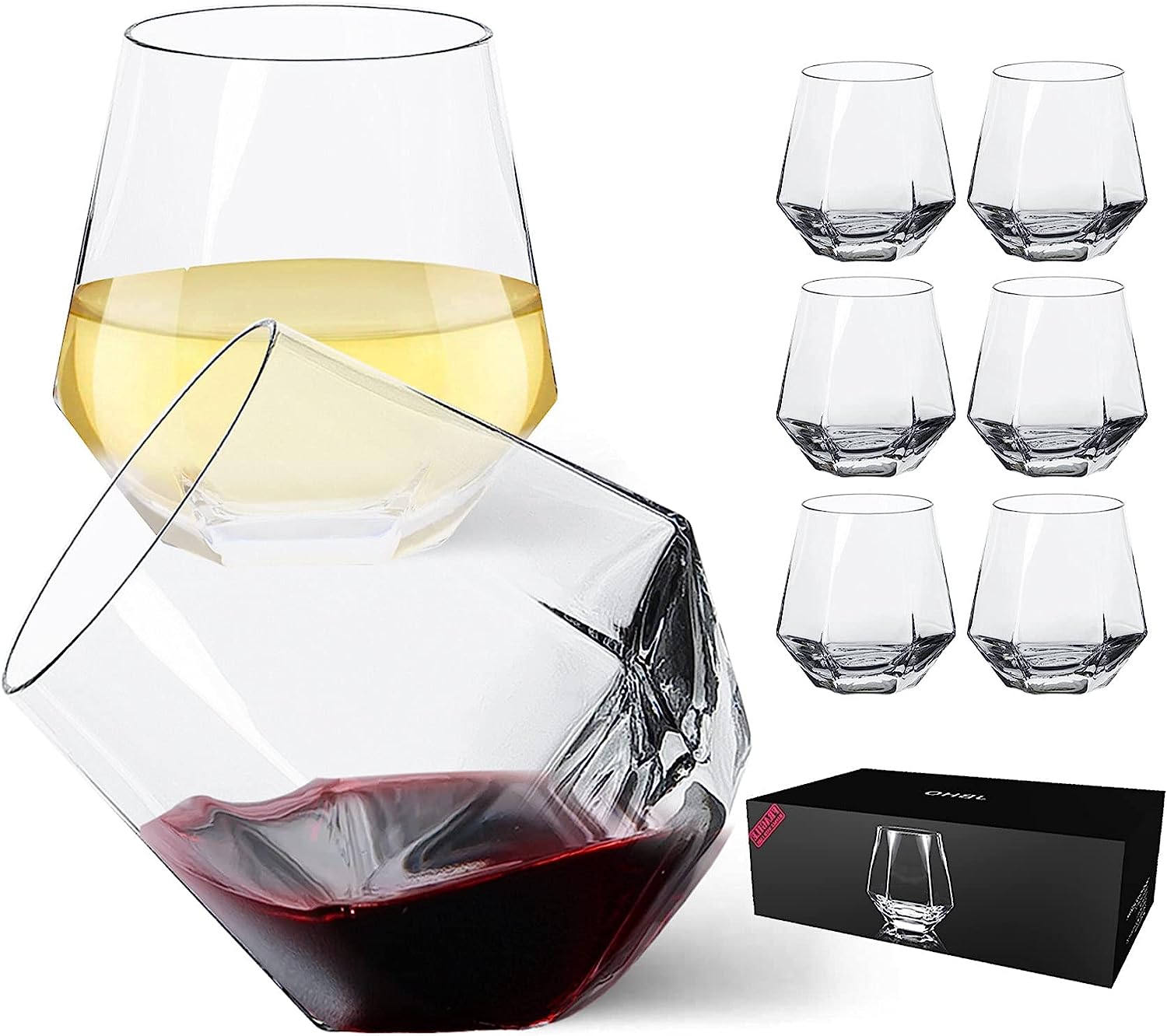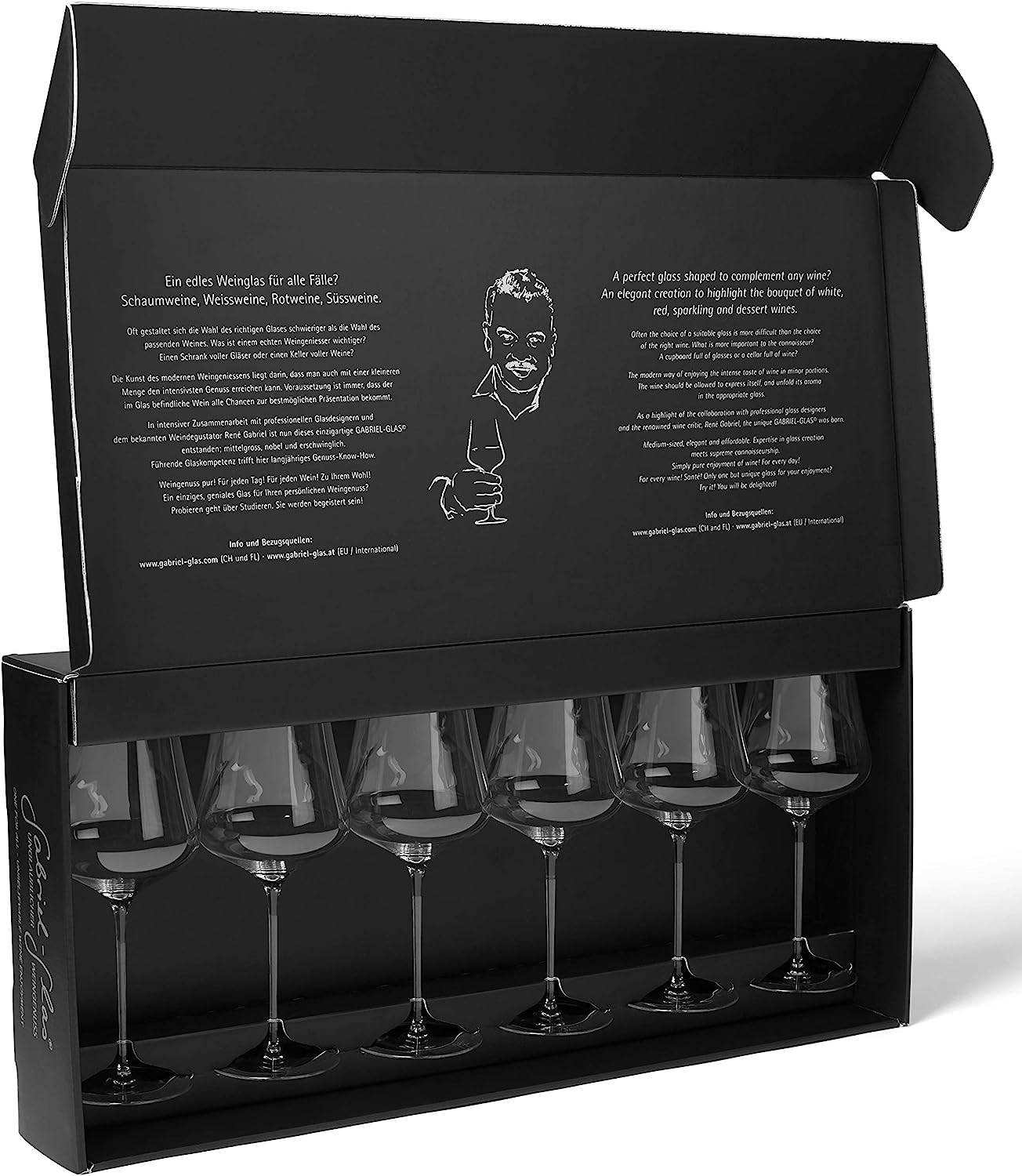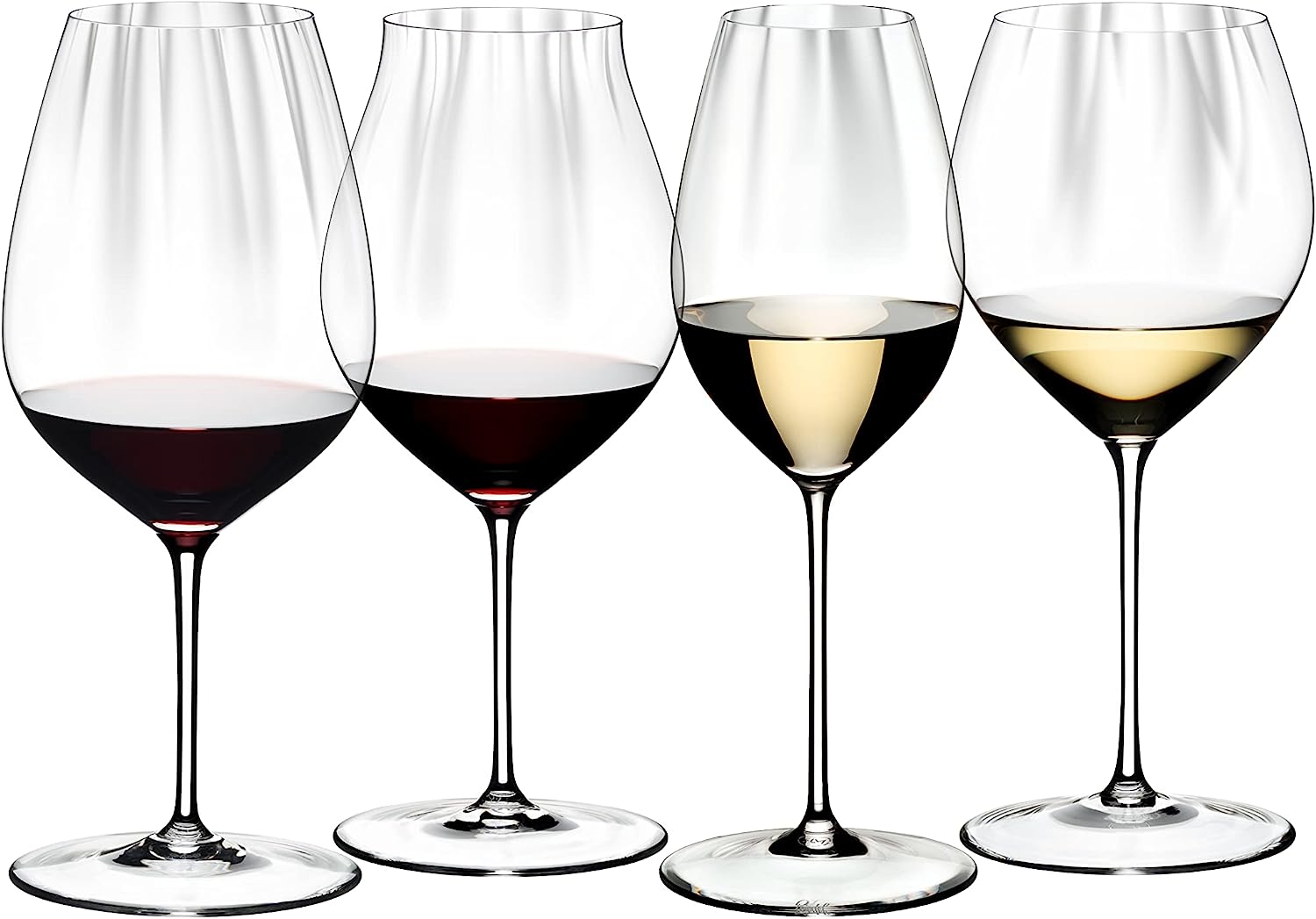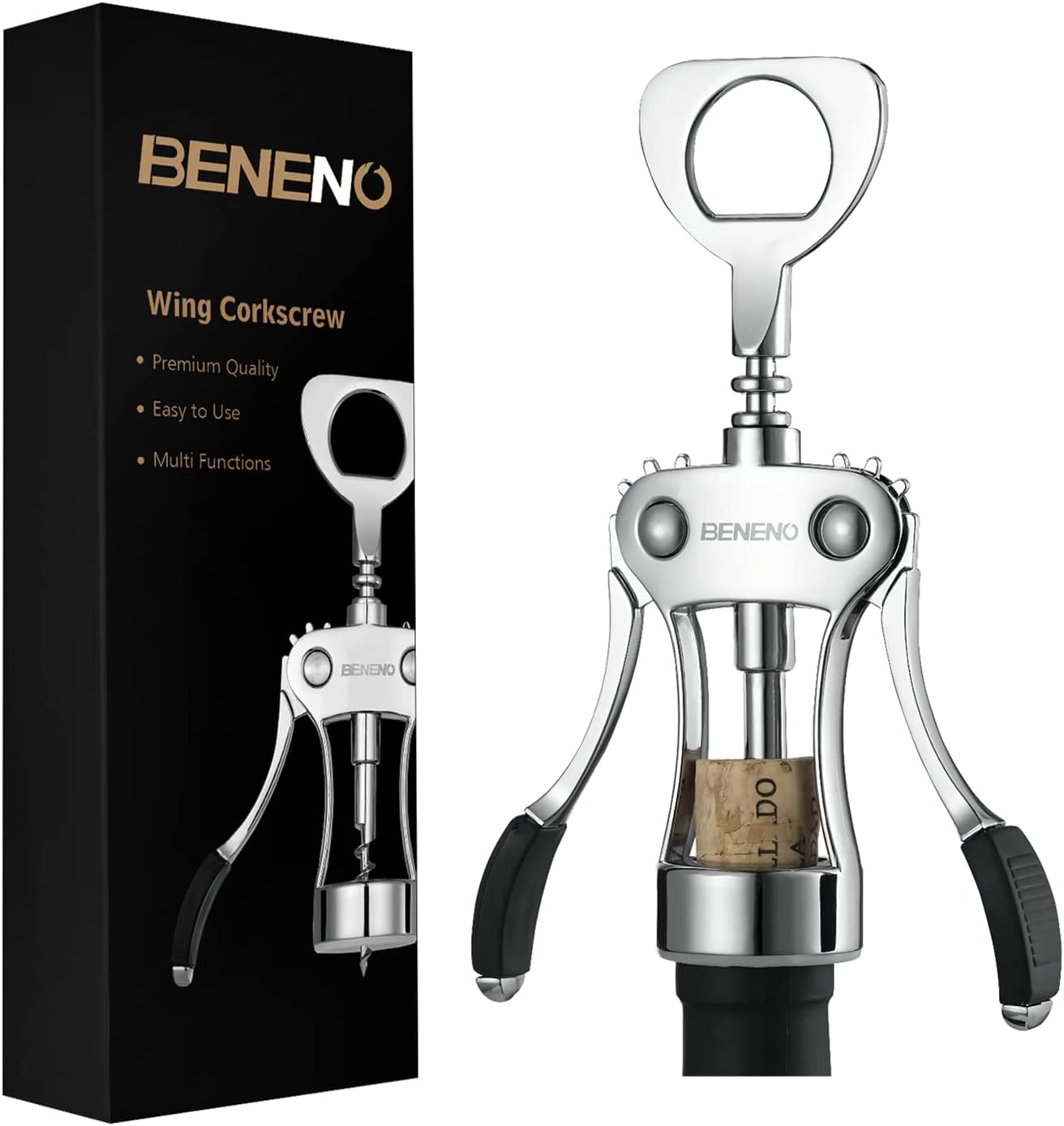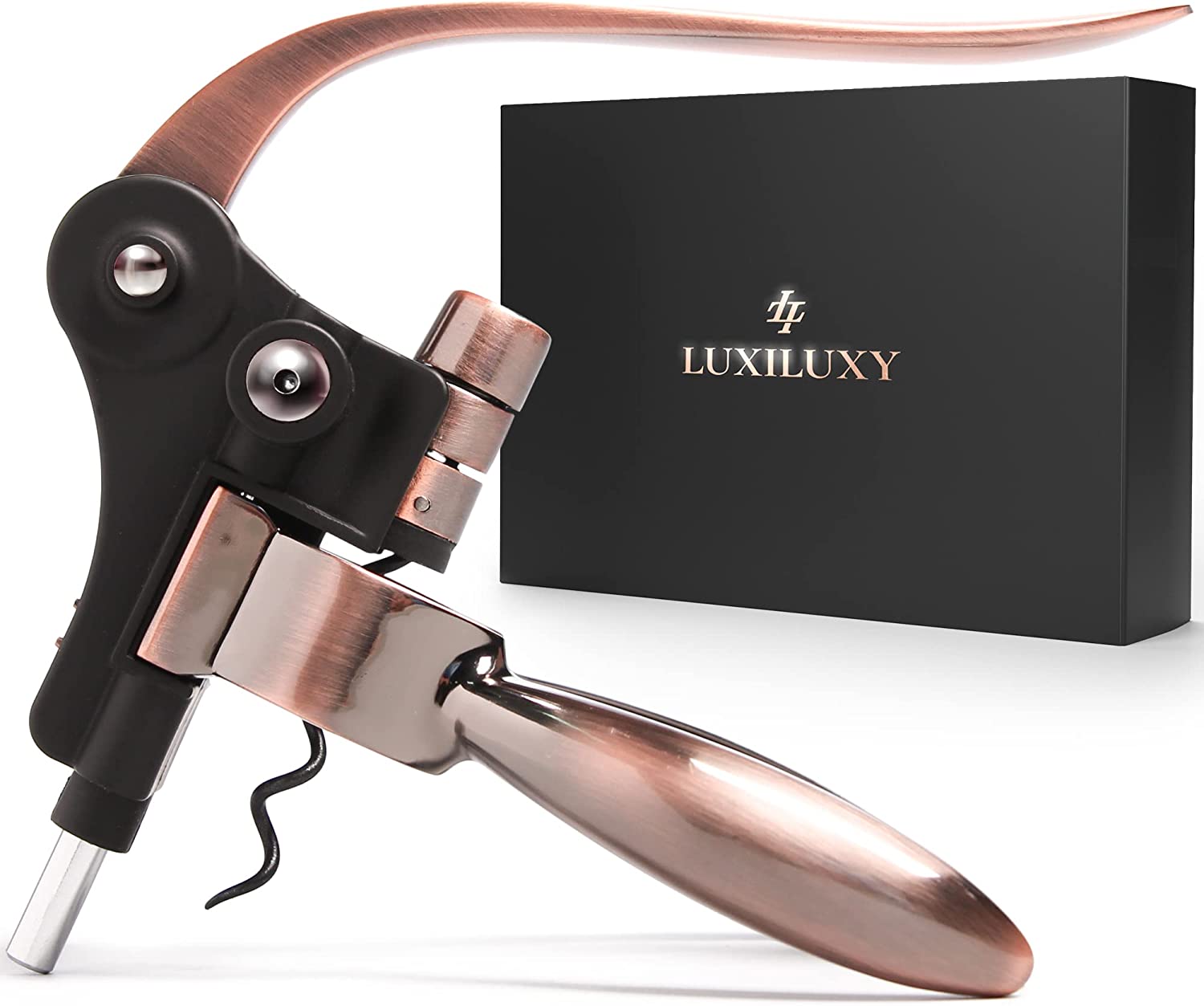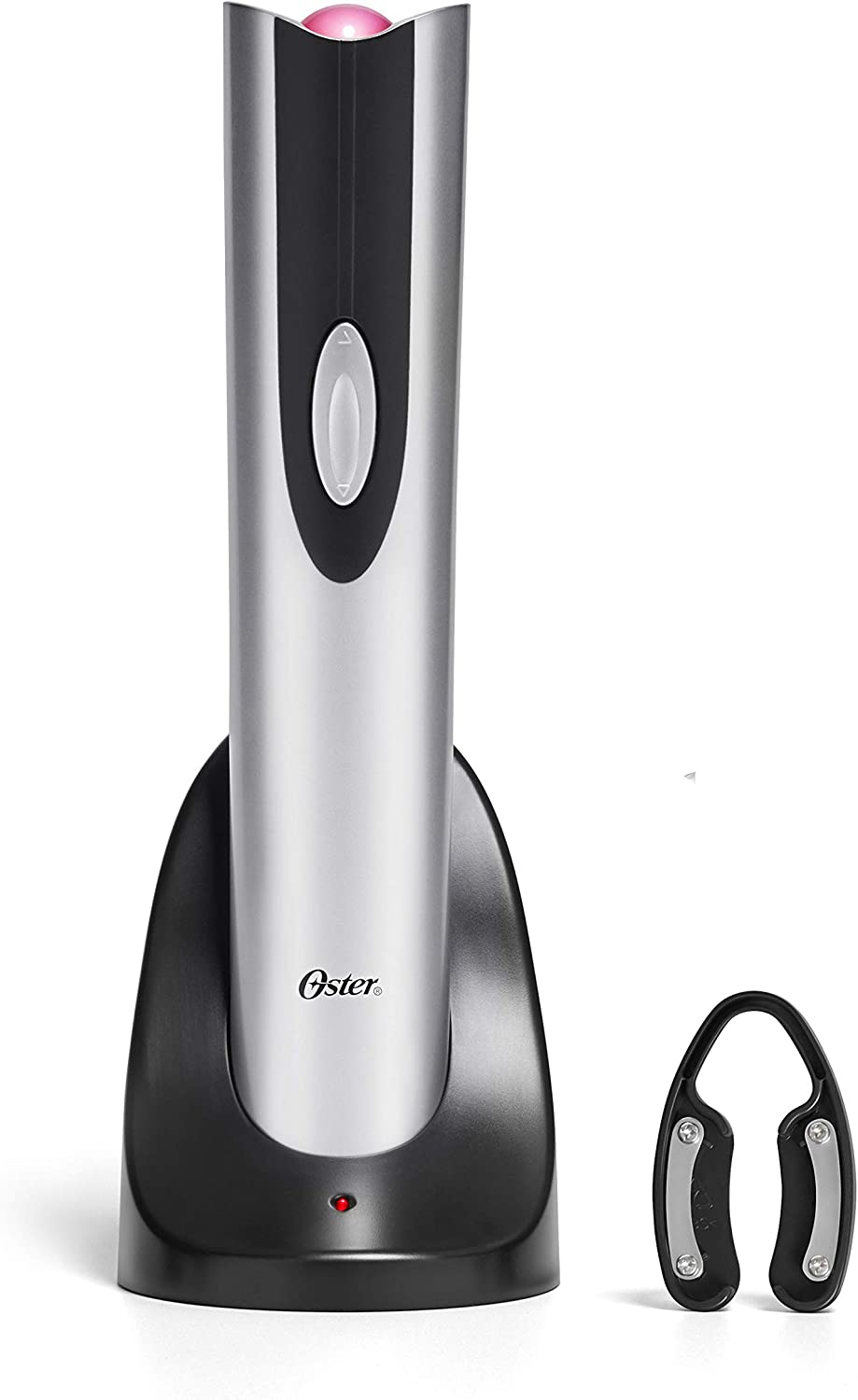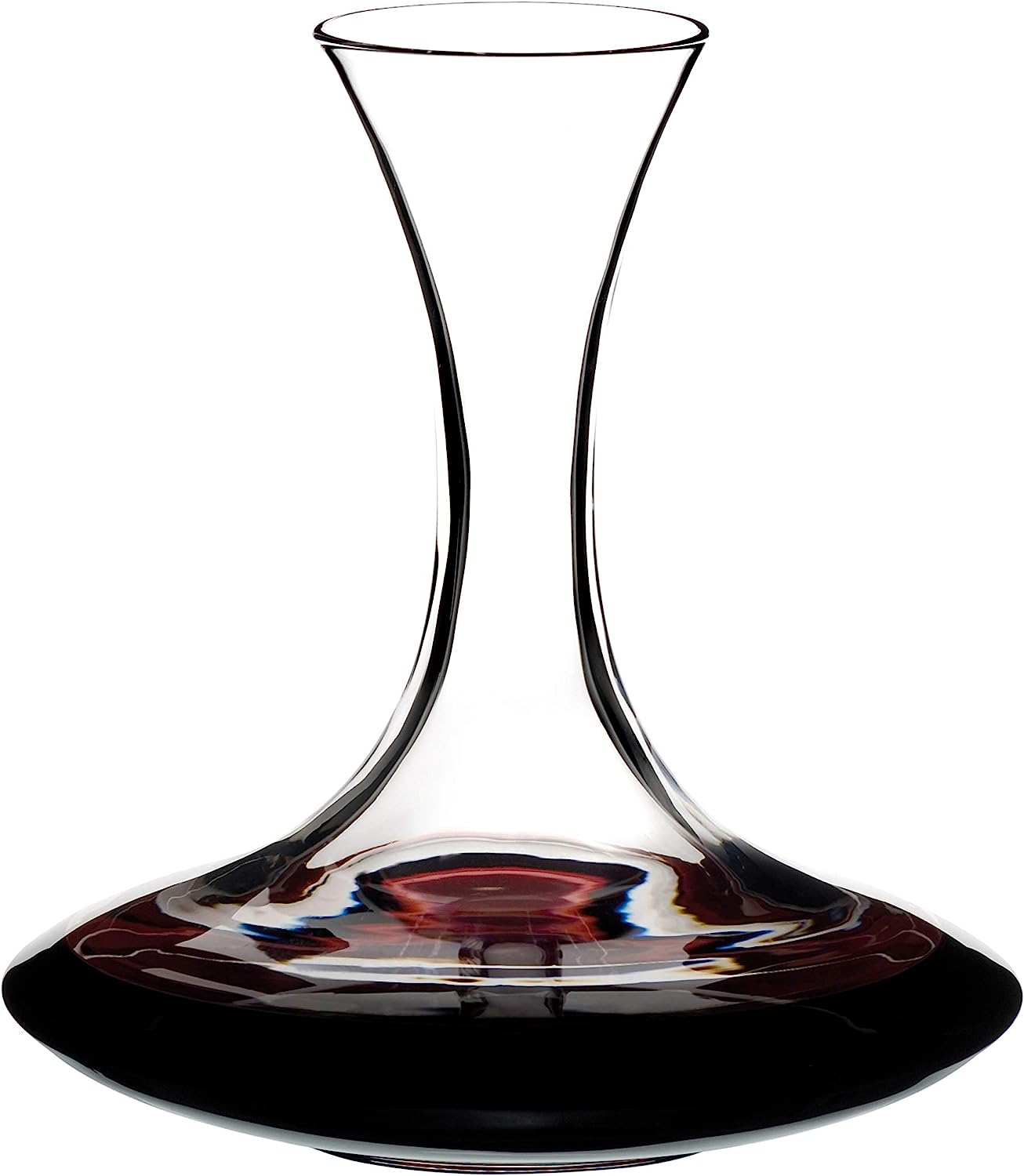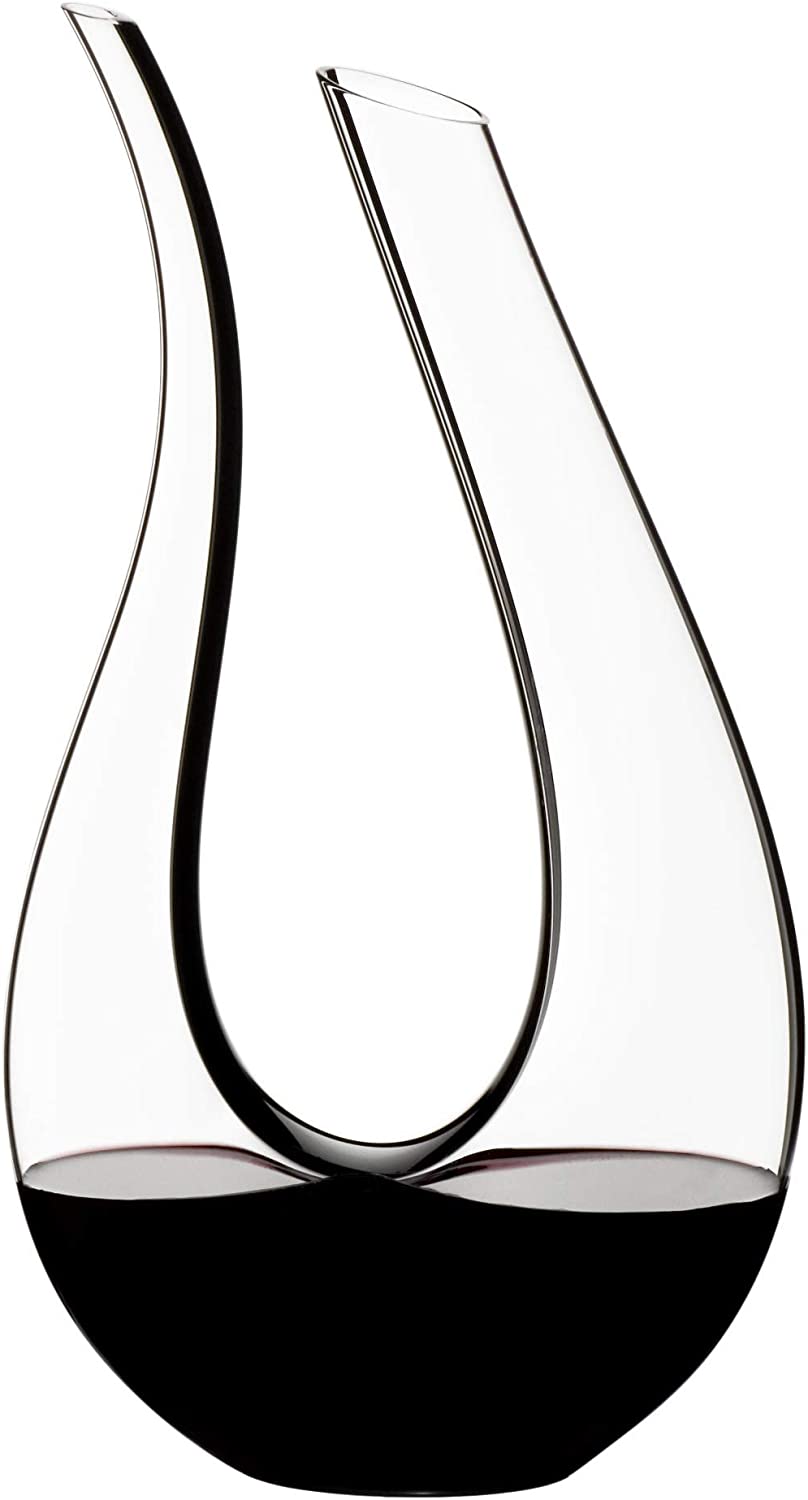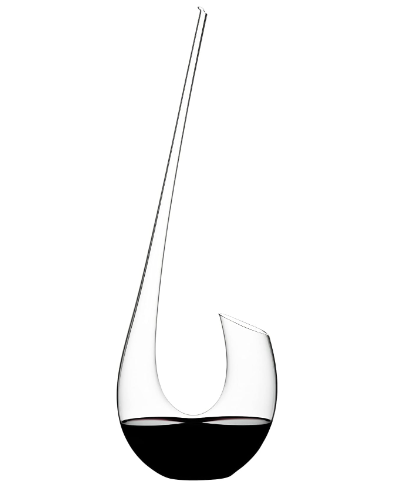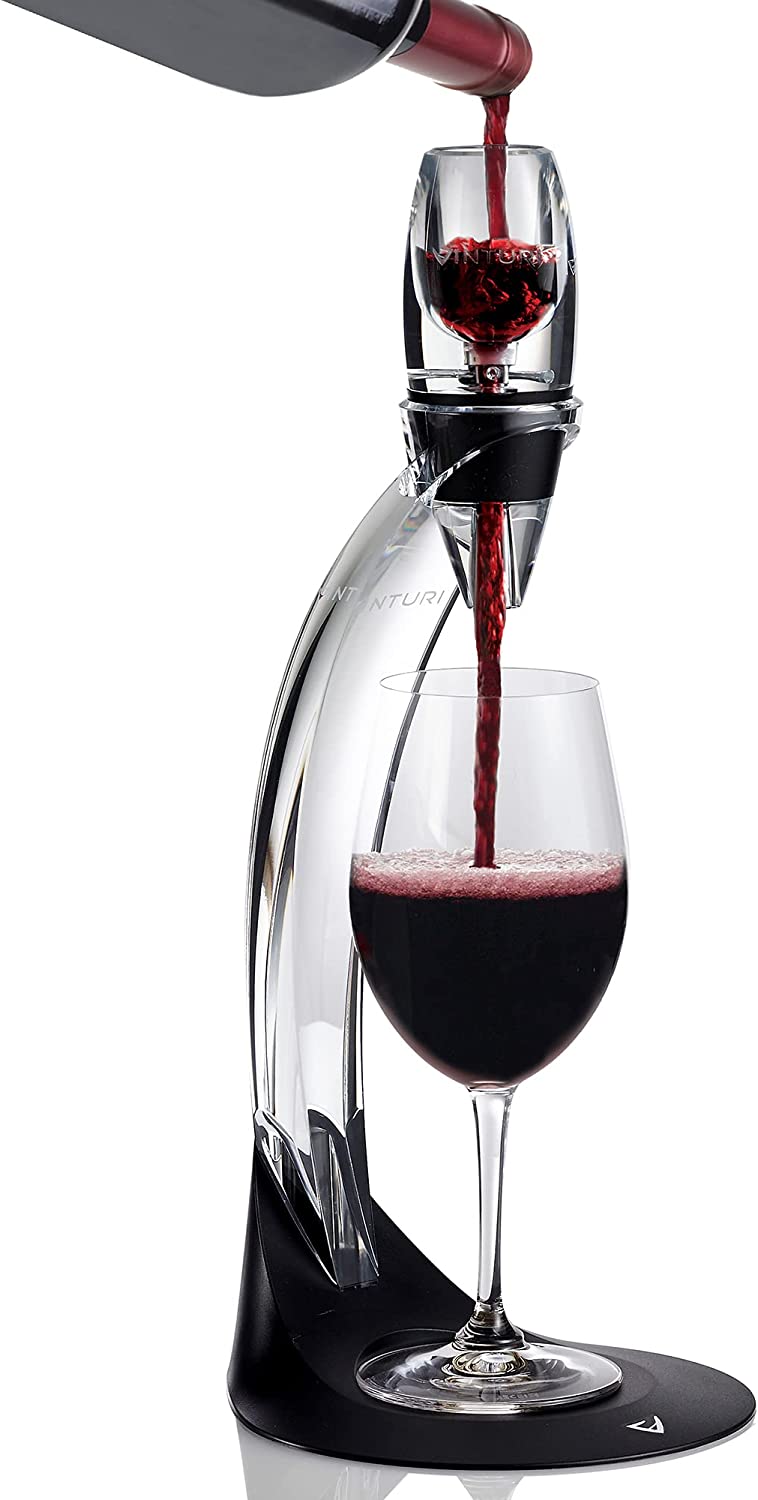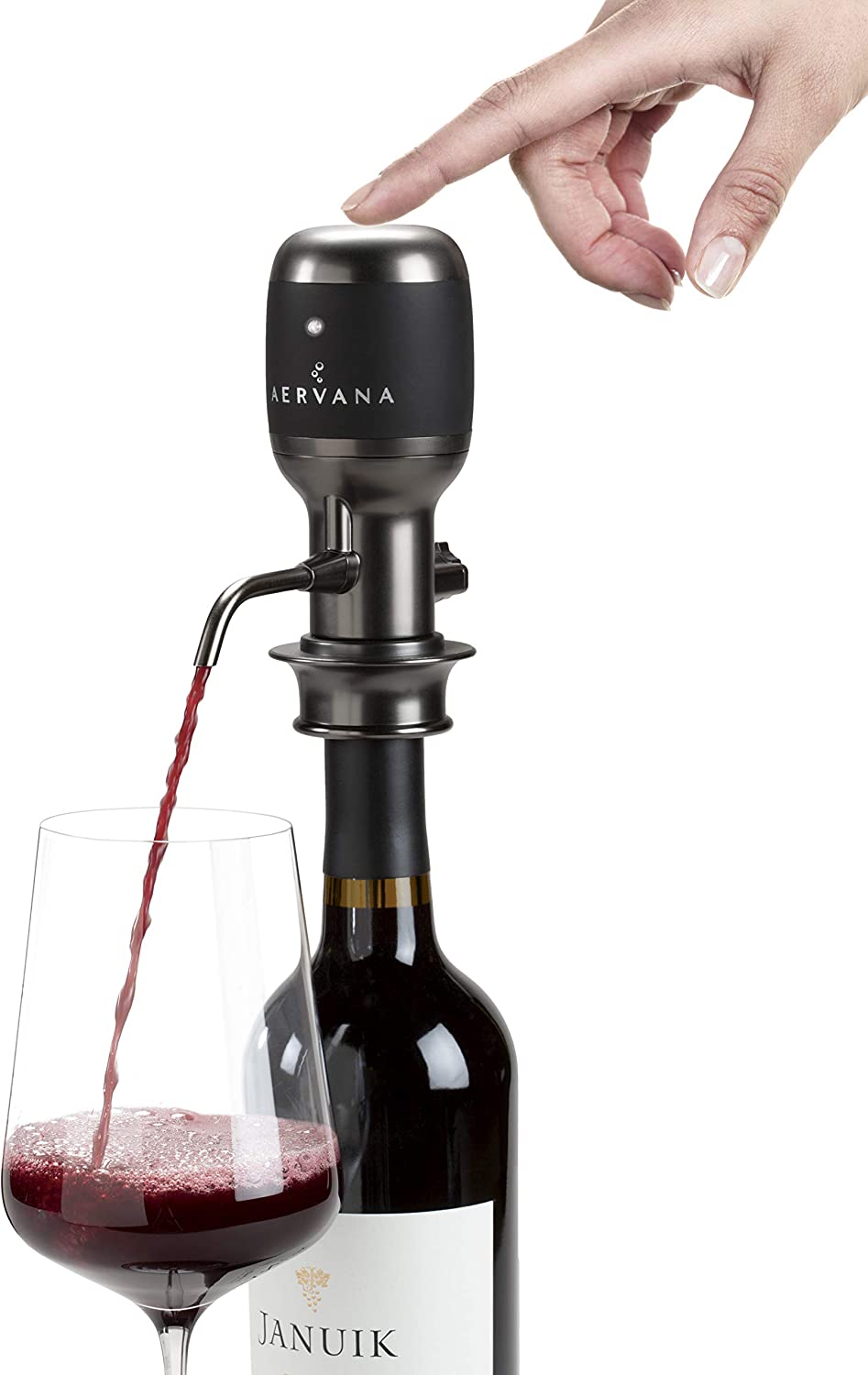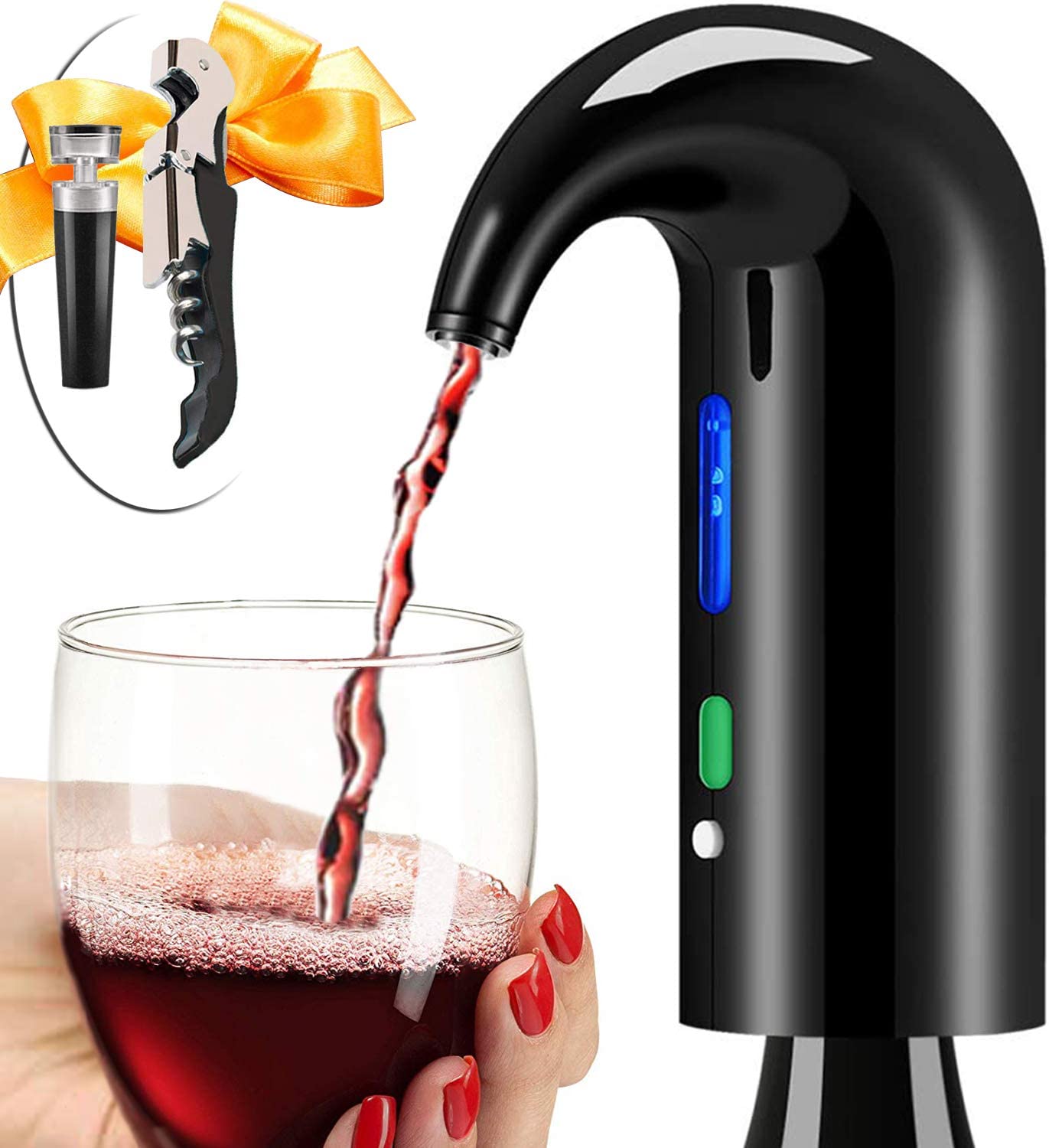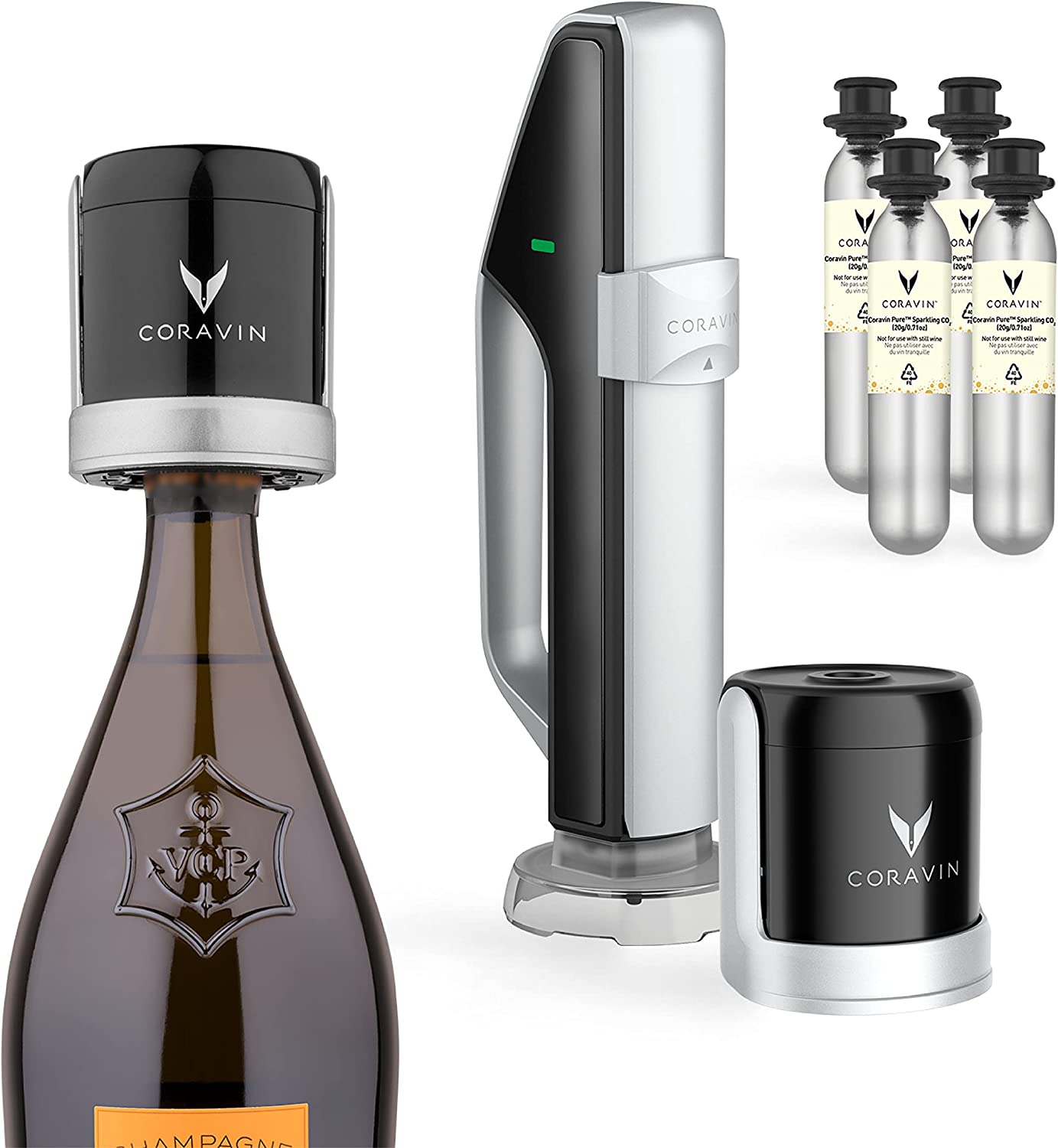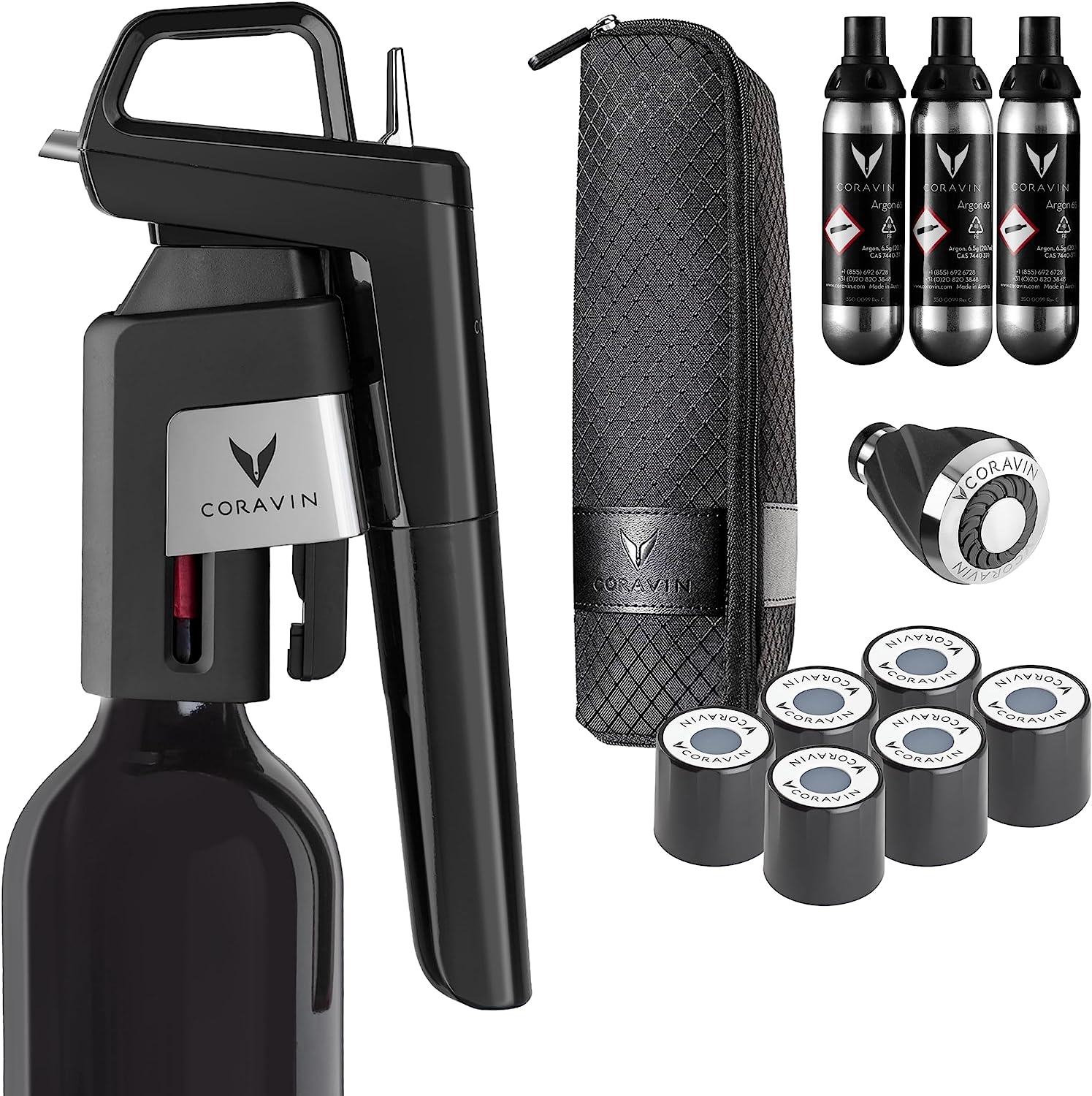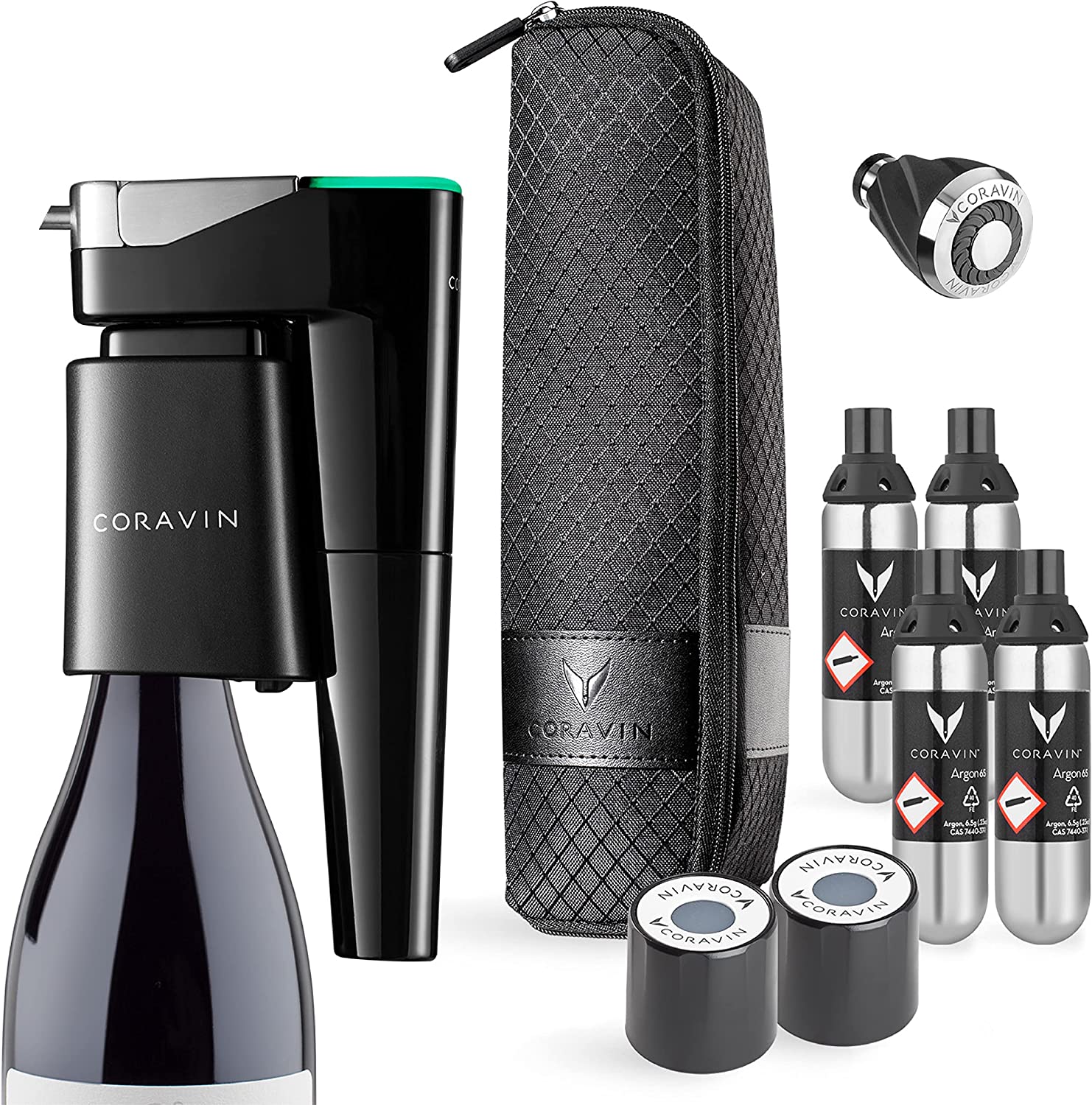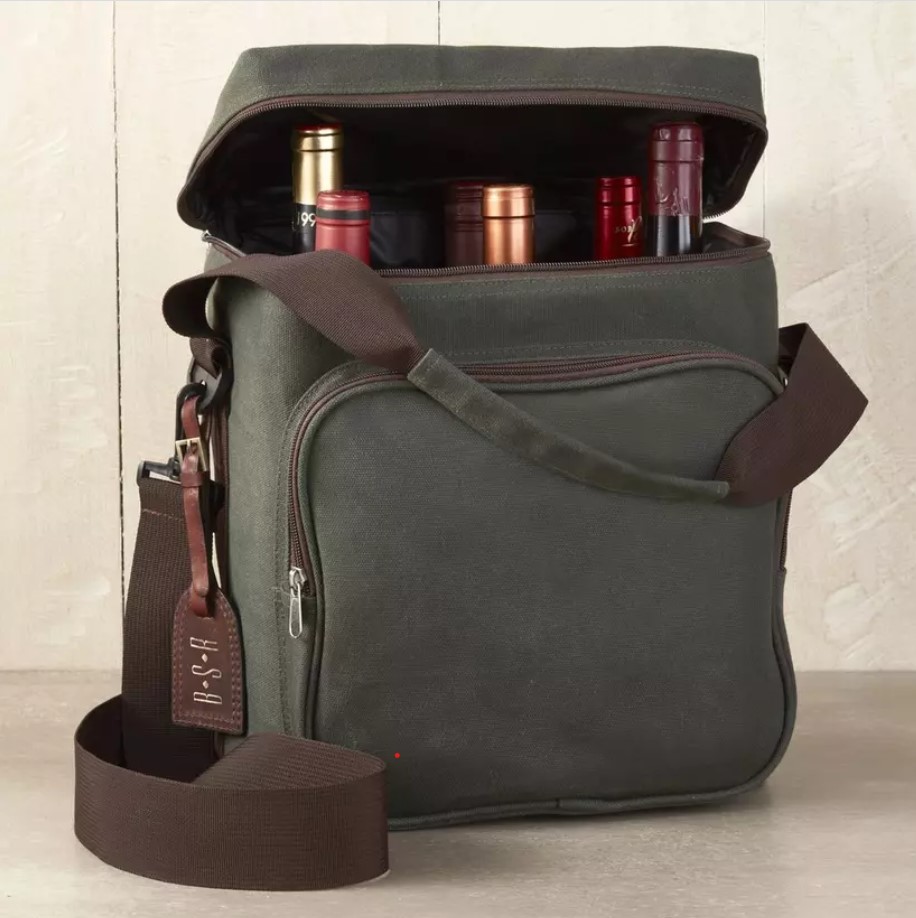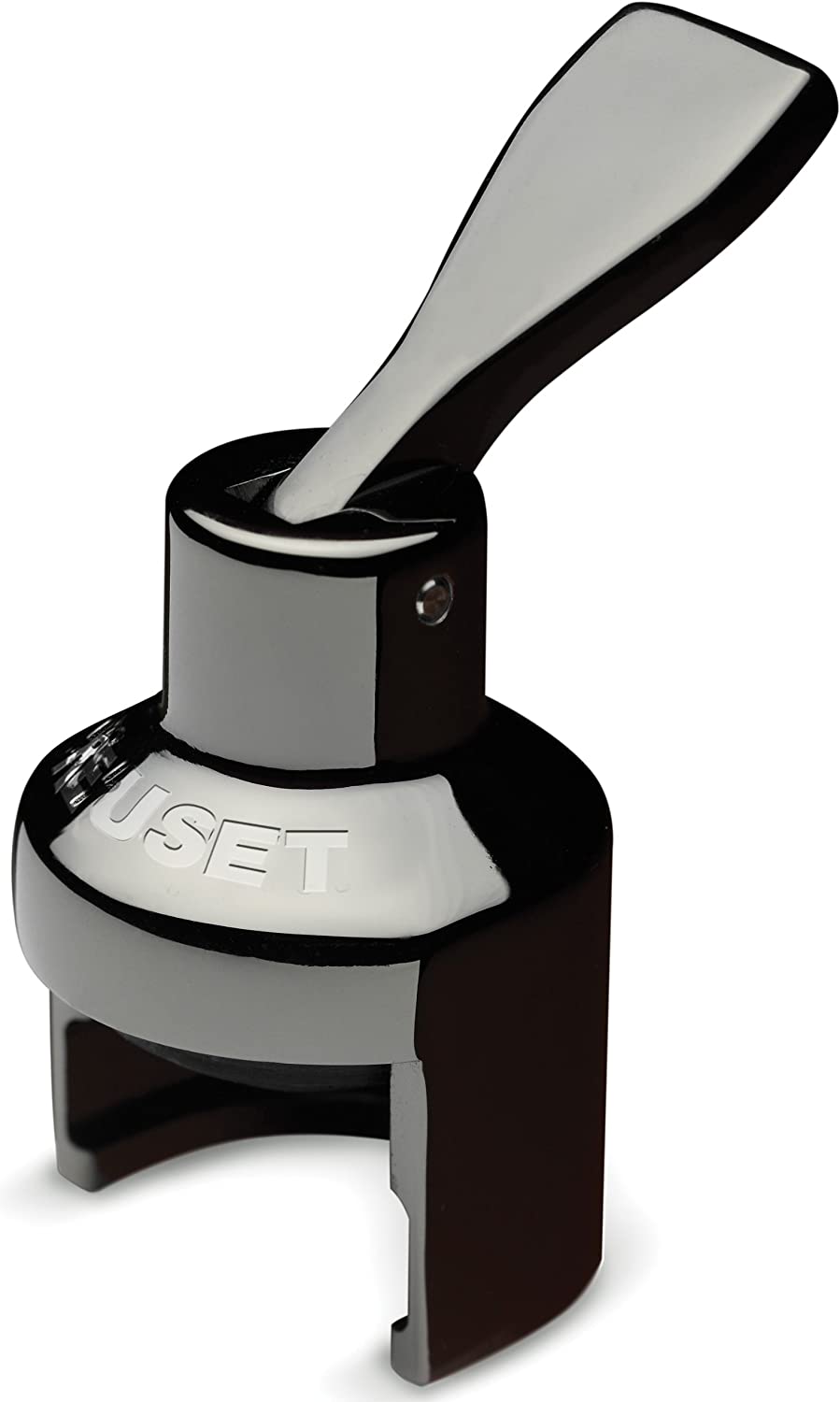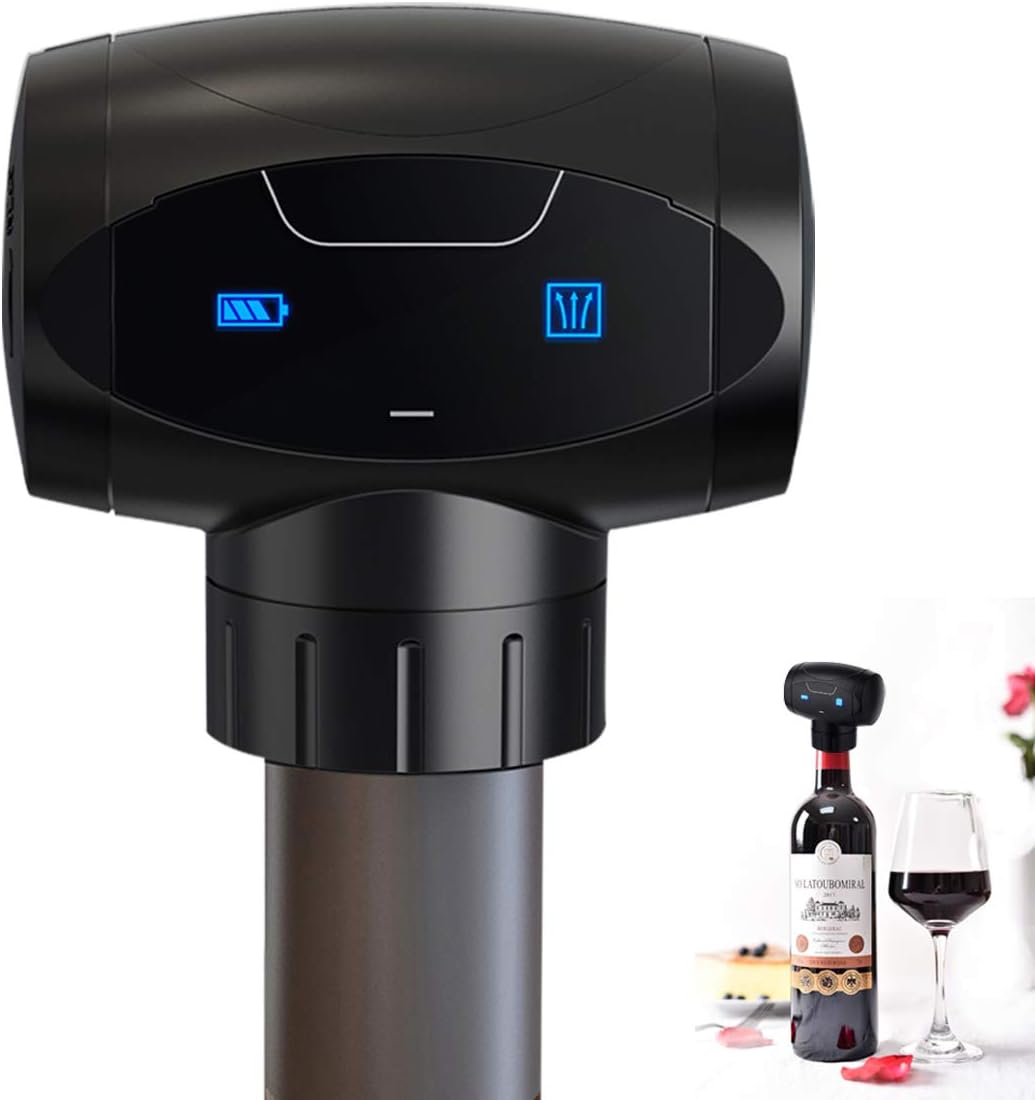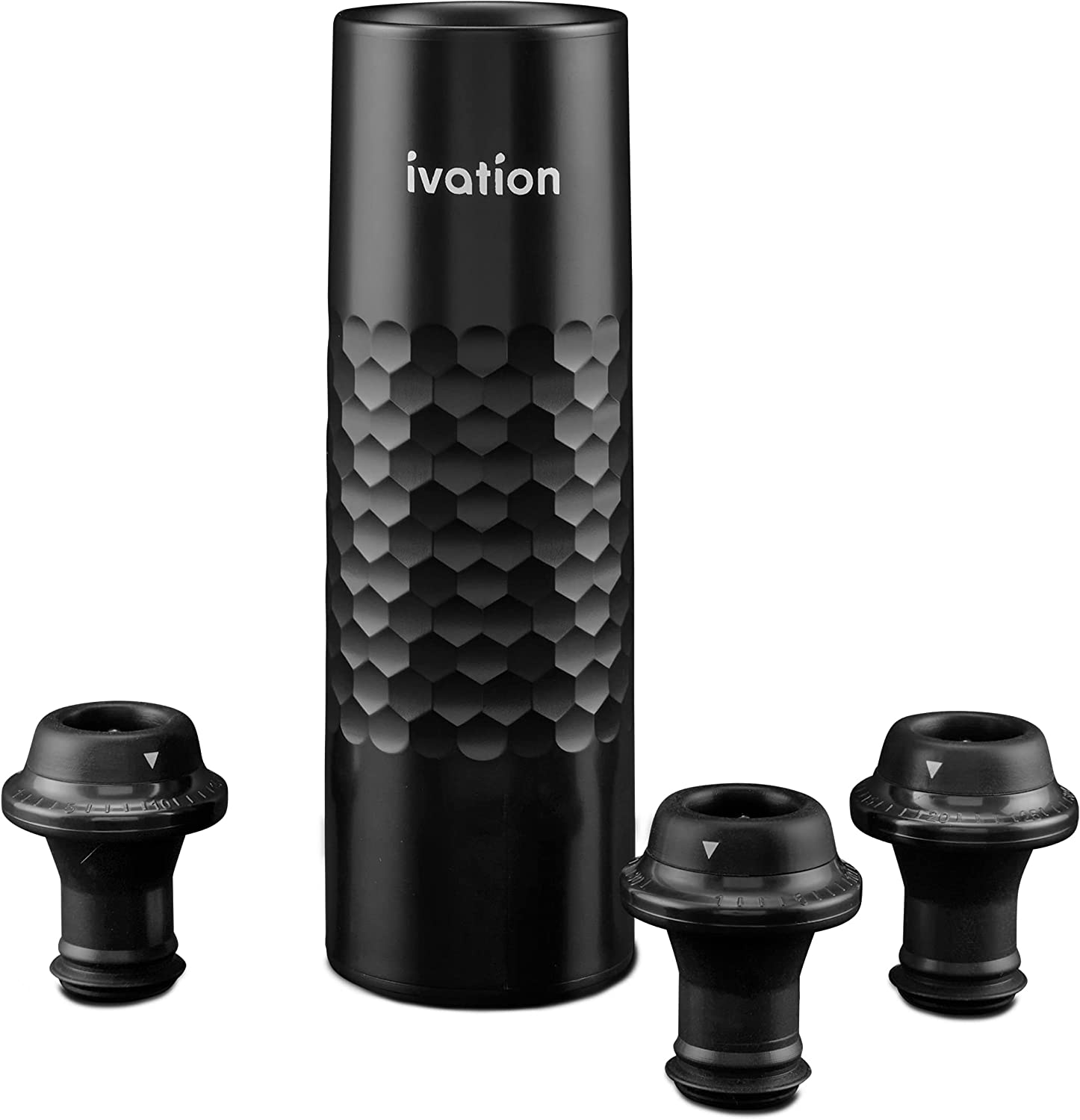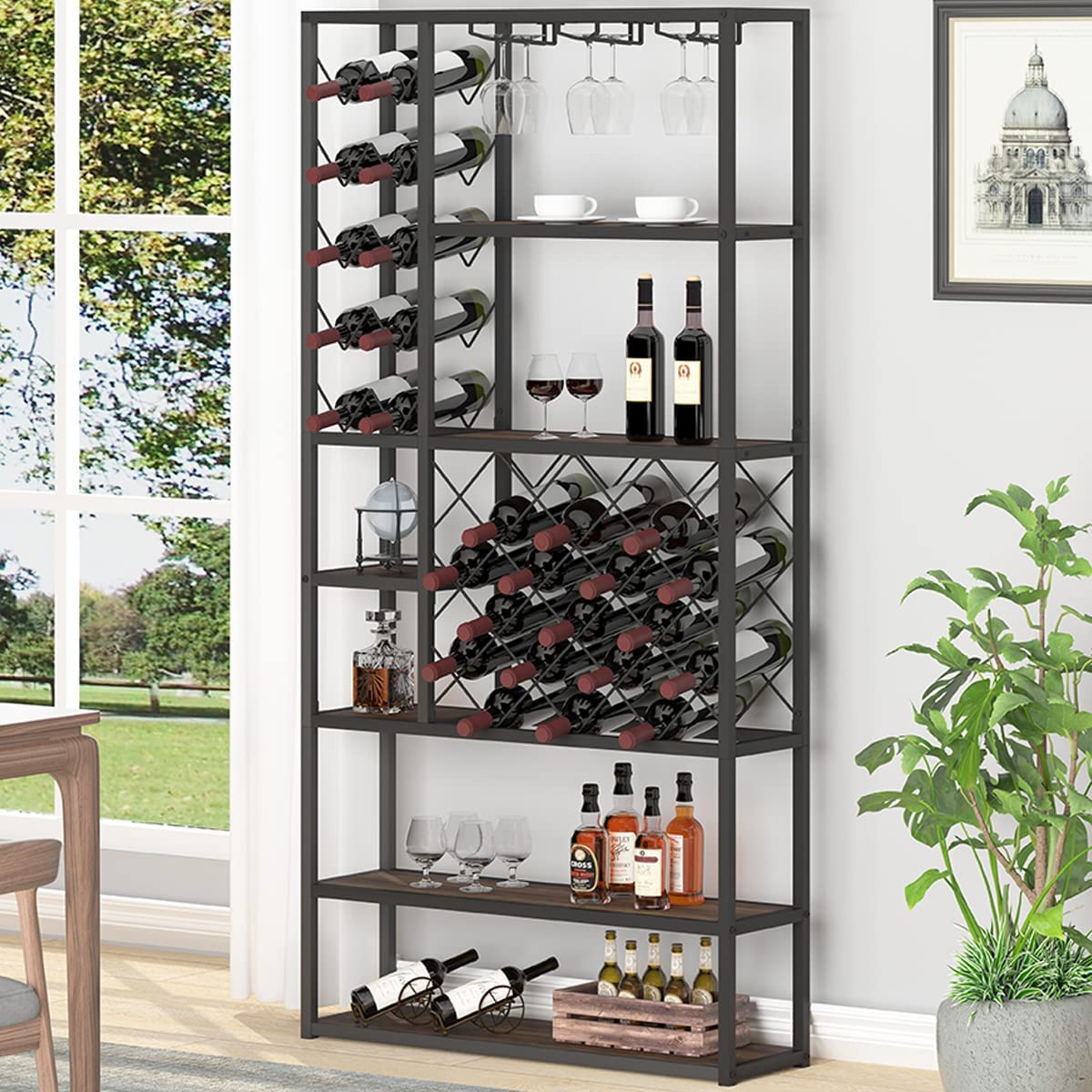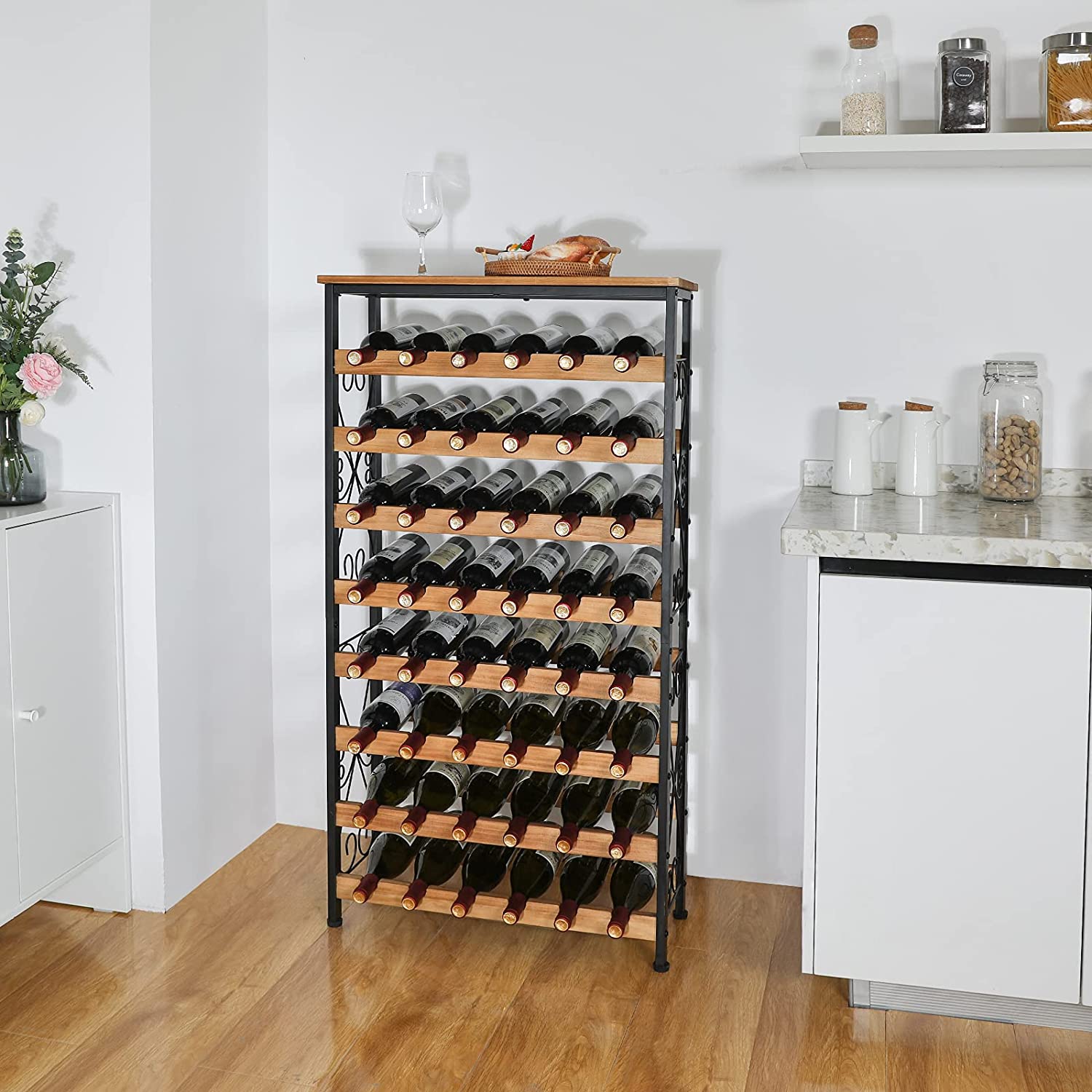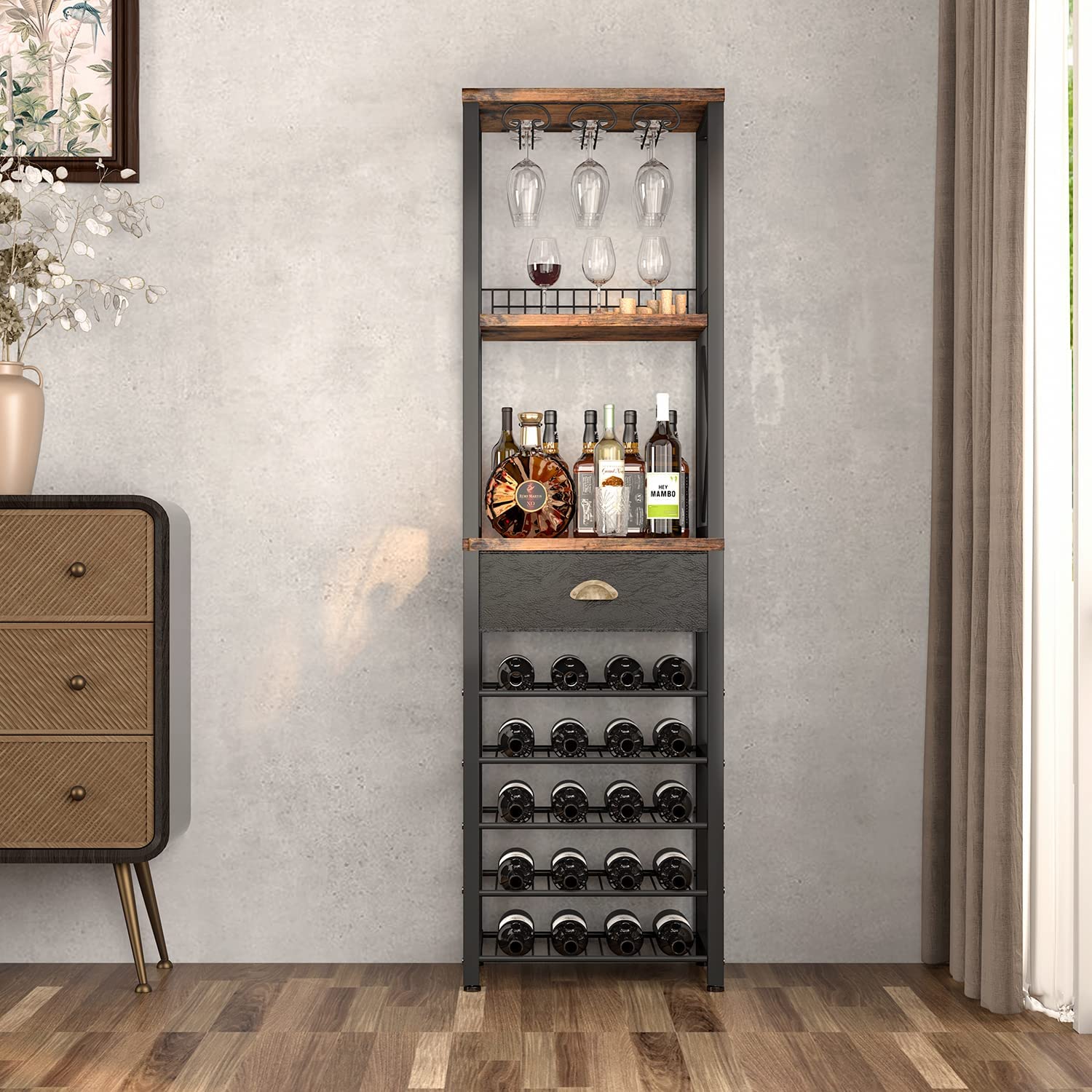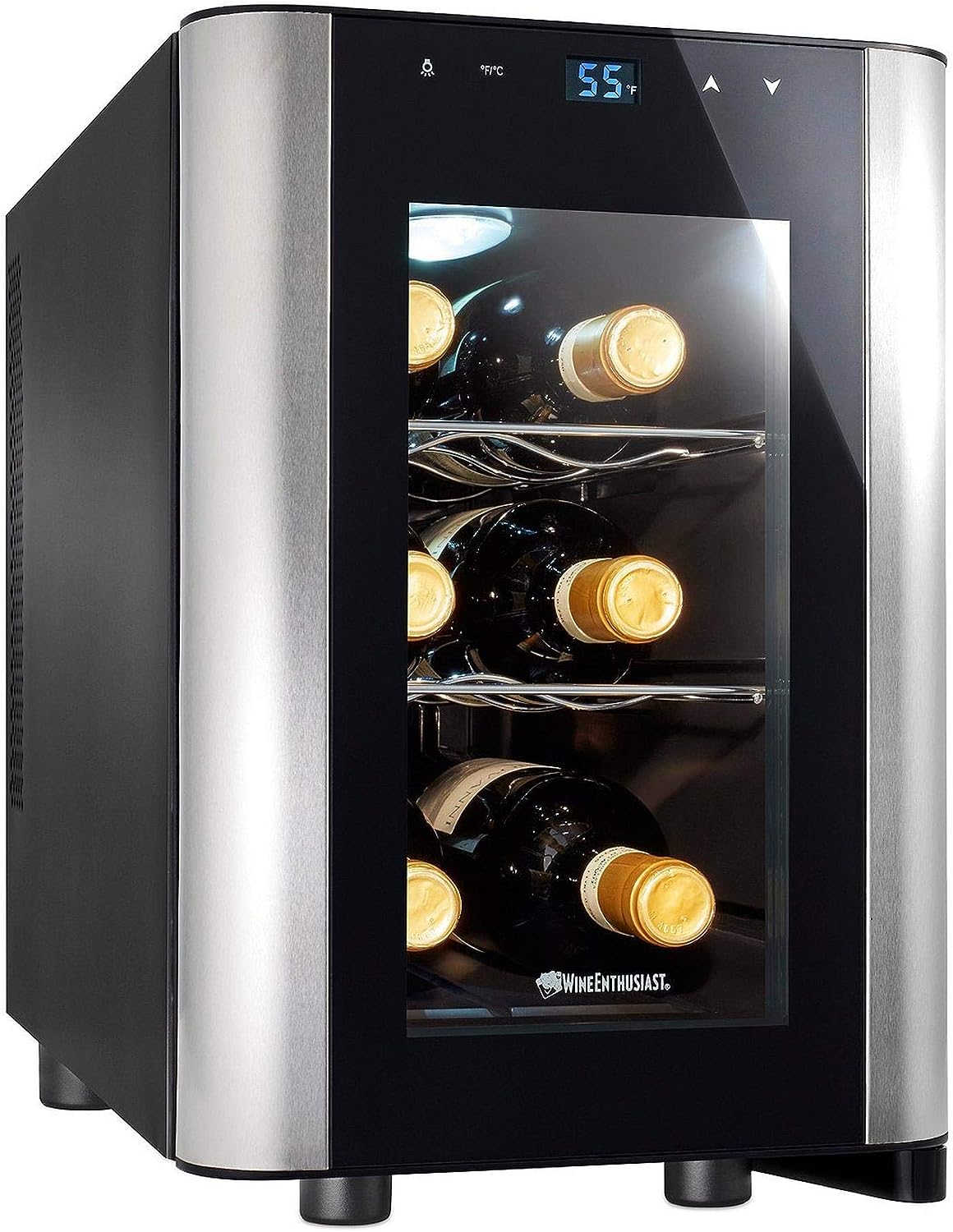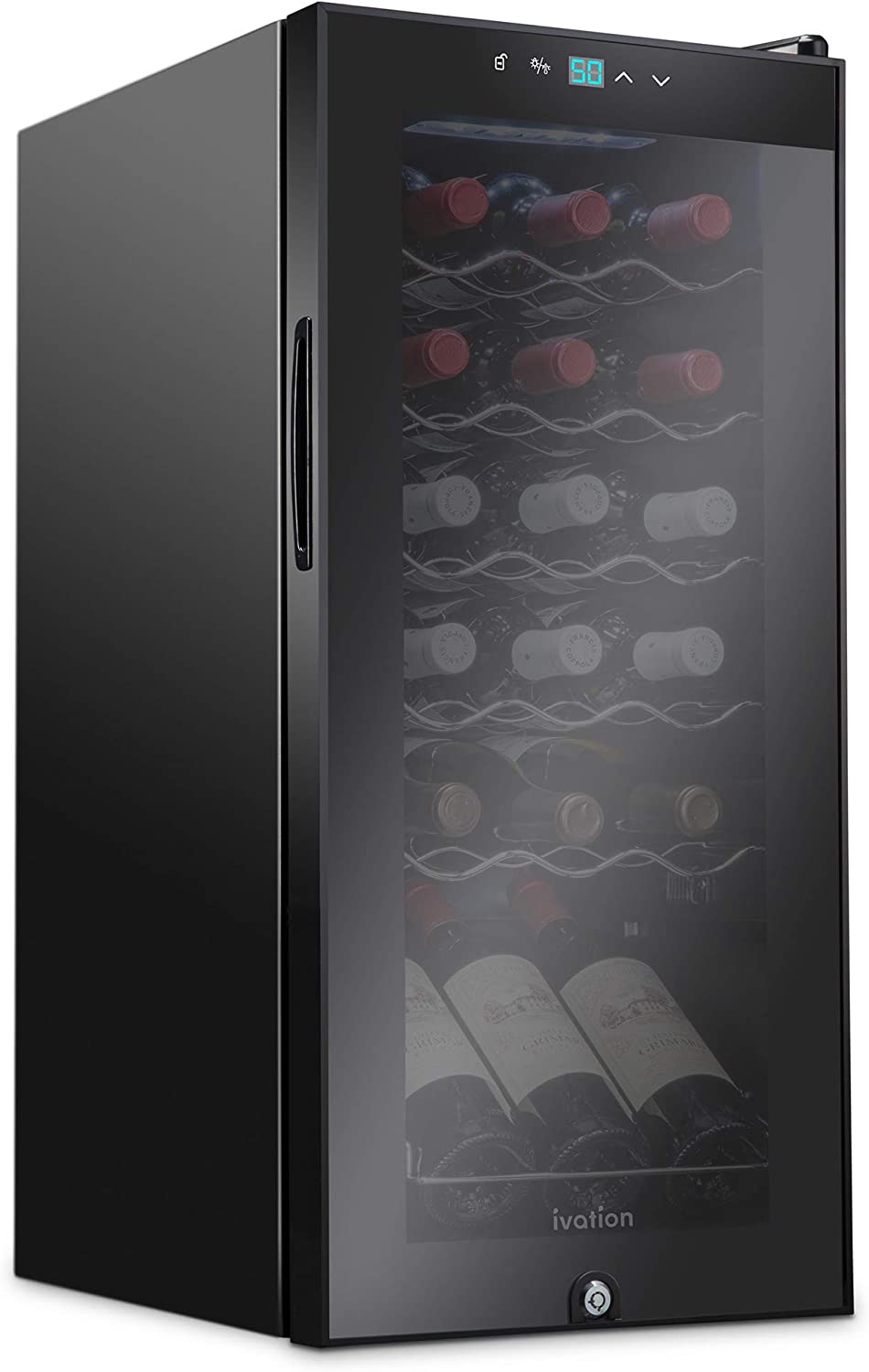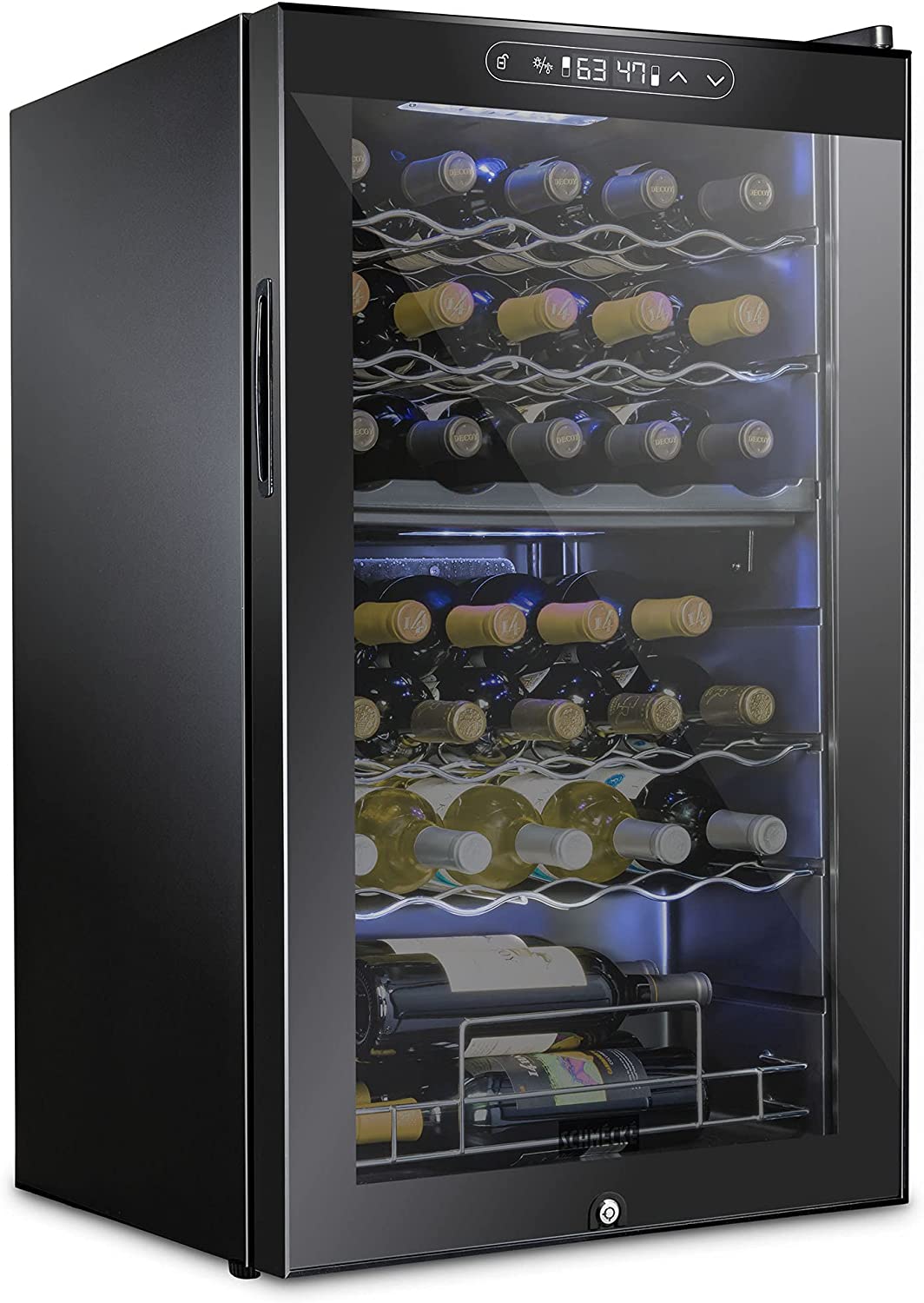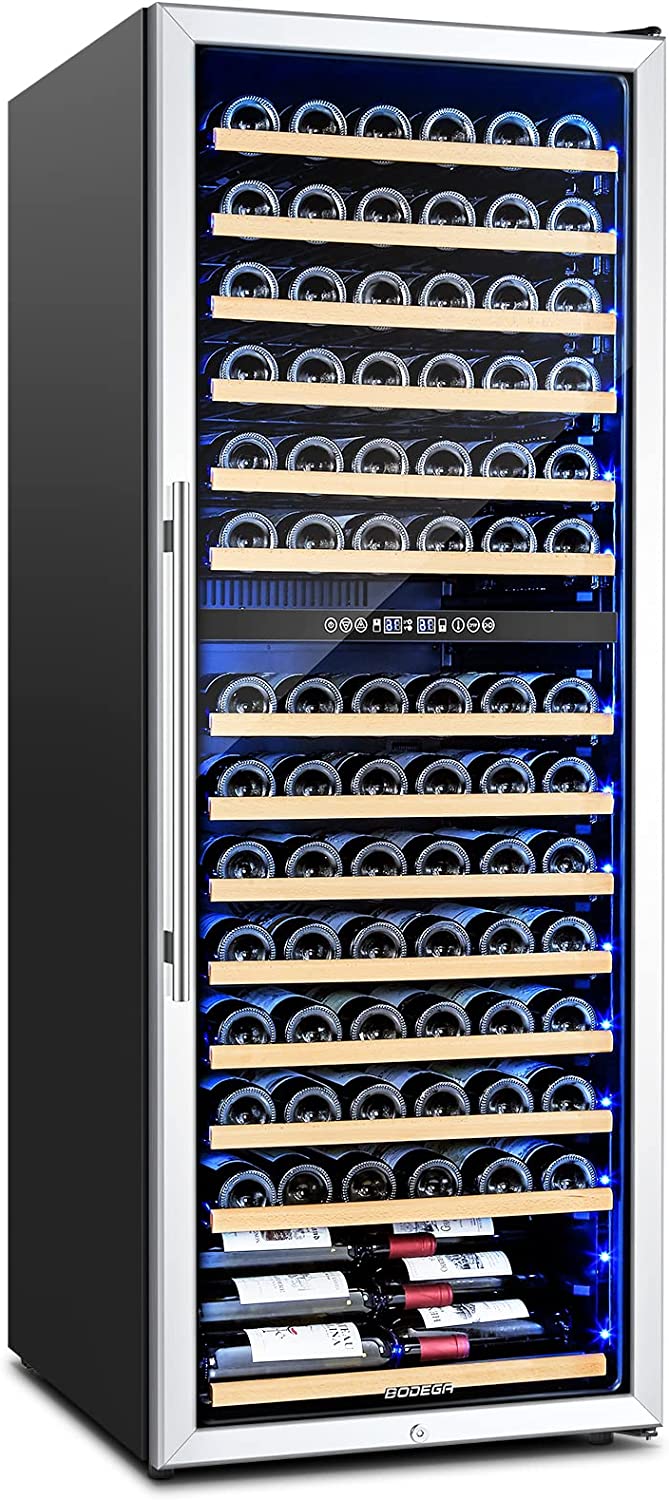Guide To Wine Accessories
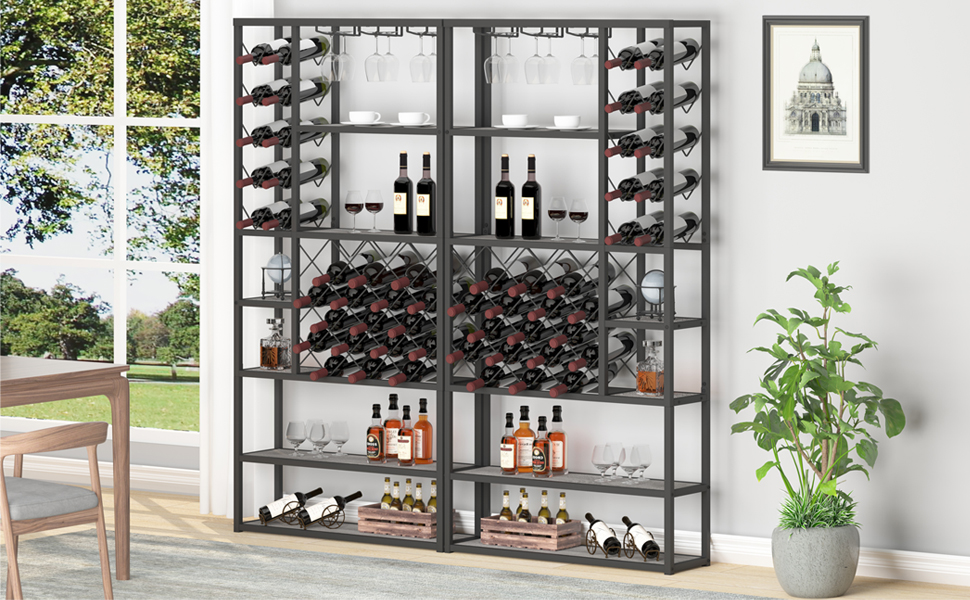
Wine, a timeless elixir that has been cherished by connoisseurs for centuries, embodies more than just a beverage; it’s an experience. From swirling the glass to savoring the bouquet, each step contributes to the journey of enjoying a fine wine. But what if we told you there’s a way to elevate this experience even further? Enter wine accessories – an array of tools and accouterments designed to enhance every facet of your wine appreciation. This comprehensive guide delves into the world of wine accessories, exploring their history, purpose, and how they can transform your wine moments into unforgettable memories.
Unveiling the past: A brief history of wine accessories
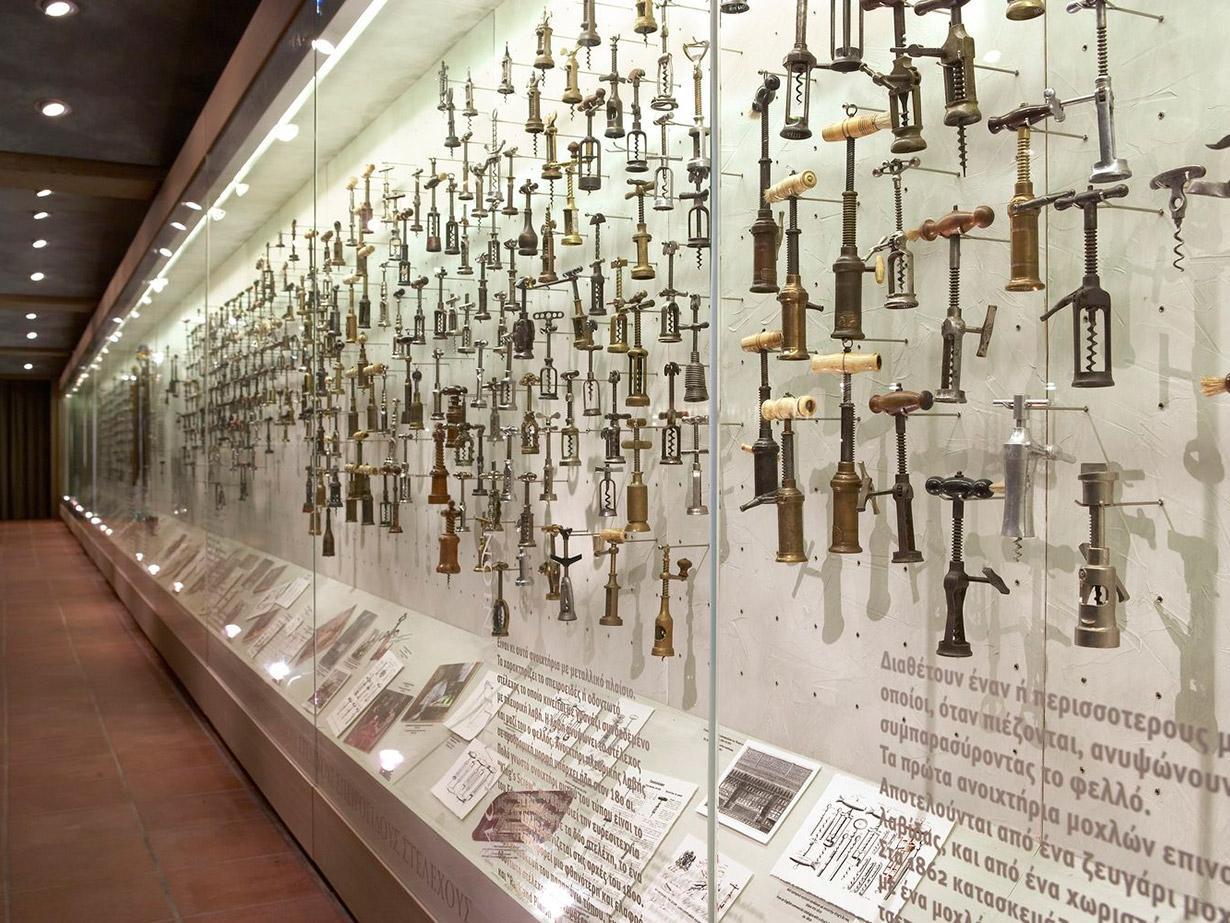
The story of wine accessories is intricately woven into the fabric of human history. From ancient civilizations to modern-day culture, the quest to perfect the art of wine enjoyment has led to the development of an assortment of tools.
The history of wine accessories is a journey that intertwines with the evolution of wine culture and the refinement of drinking rituals.
The concept of wine accessories encompasses a wide range of items designed to enhance the enjoyment of wine, from glassware and corkscrews to decanters and wine stoppers.
Glass wine vessels first made their appearance in ancient Egypt around 1500 BC, ancient Greeks utilized amphorae to store and pour wine. But it was the Romans who truly advanced the craftsmanship of glassblowing, leading to the production of elegant drinking vessels, and more delicate and ornate glassware.
These early wine vessels laid the foundation for the elegant wine glasses we know today.
As civilizations flourished, wine accessories evolved to reflect changing tastes and preferences. The Middle Ages saw the rise of wine cellars and storage methods, giving rise to innovative containers like wine barrels and amphorae.
With the advent of the Renaissance, wine became an integral part of the “fine dining” experience, leading to the development of specialized glassware designed to enhance the aromas and flavors of different wines.
The 17th century brought the adoption of glass bottles and corks, giving birth to the ancestor of the modern bottle opener.
The 19th and 20th centuries witnessed the rise of wine connoisseurship, which led to the creation of more refined wine accessories.
Decanters became a staple for aerating and serving wines, while wine stoppers and preservation systems were developed to extend the shelf life of opened bottles.
Today, we find ourselves surrounded by a myriad of tools designed to enrich our wine experiences.
Wine accessories encompass a vast array of tools and gadgets, ranging from temperature-controlled wine coolers to sophisticated aerators designed to expedite the breathing process of wine.
The essentials: Must-have wine accessories
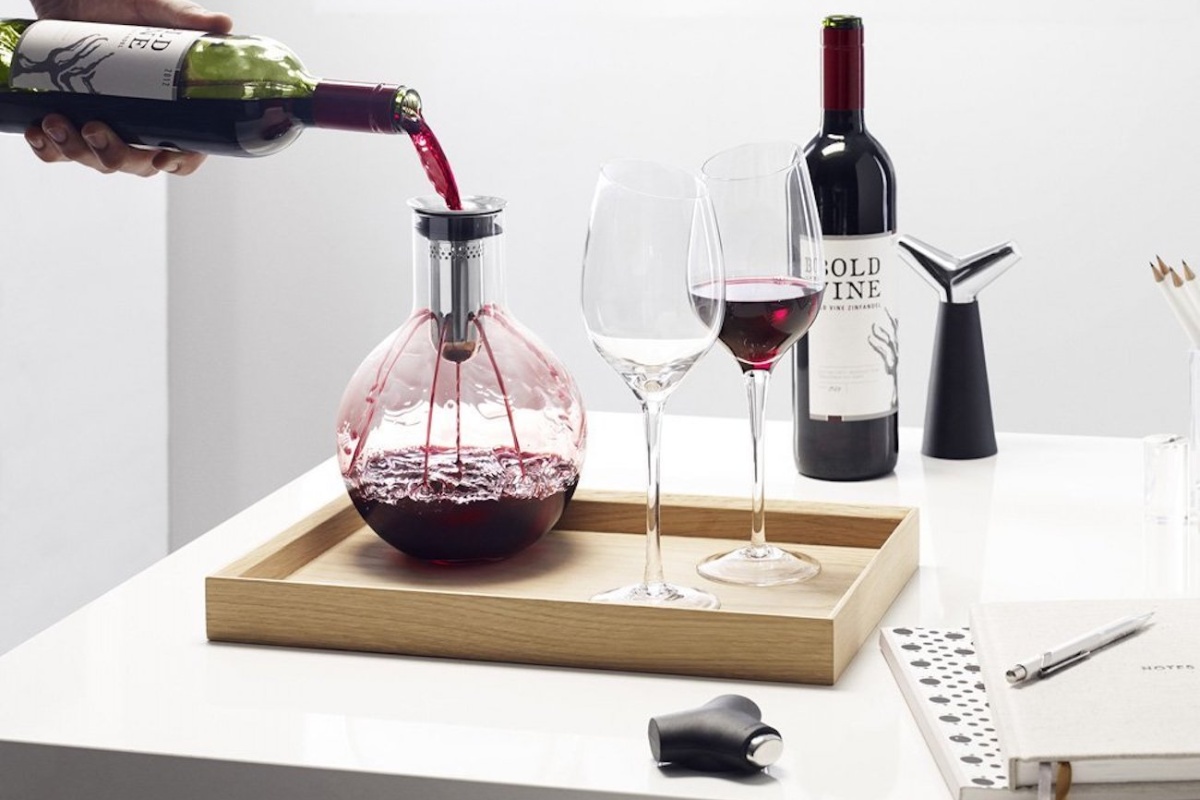
Having the right wine accessories can greatly enhance your wine-drinking experience in every aspect.
These accessories can greatly affect your wine-drinking experience by optimizing the wine’s sensory aspects and ensuring its preservation.
Whether you’re a wine lover who enjoys the occasional glass or a professional sommelier with years of experience, having the proper tools can greatly enhance your wine appreciation and enjoyment.
Here are some must-have wine accessories that can elevate your enjoyment of wine.
Wine glasses
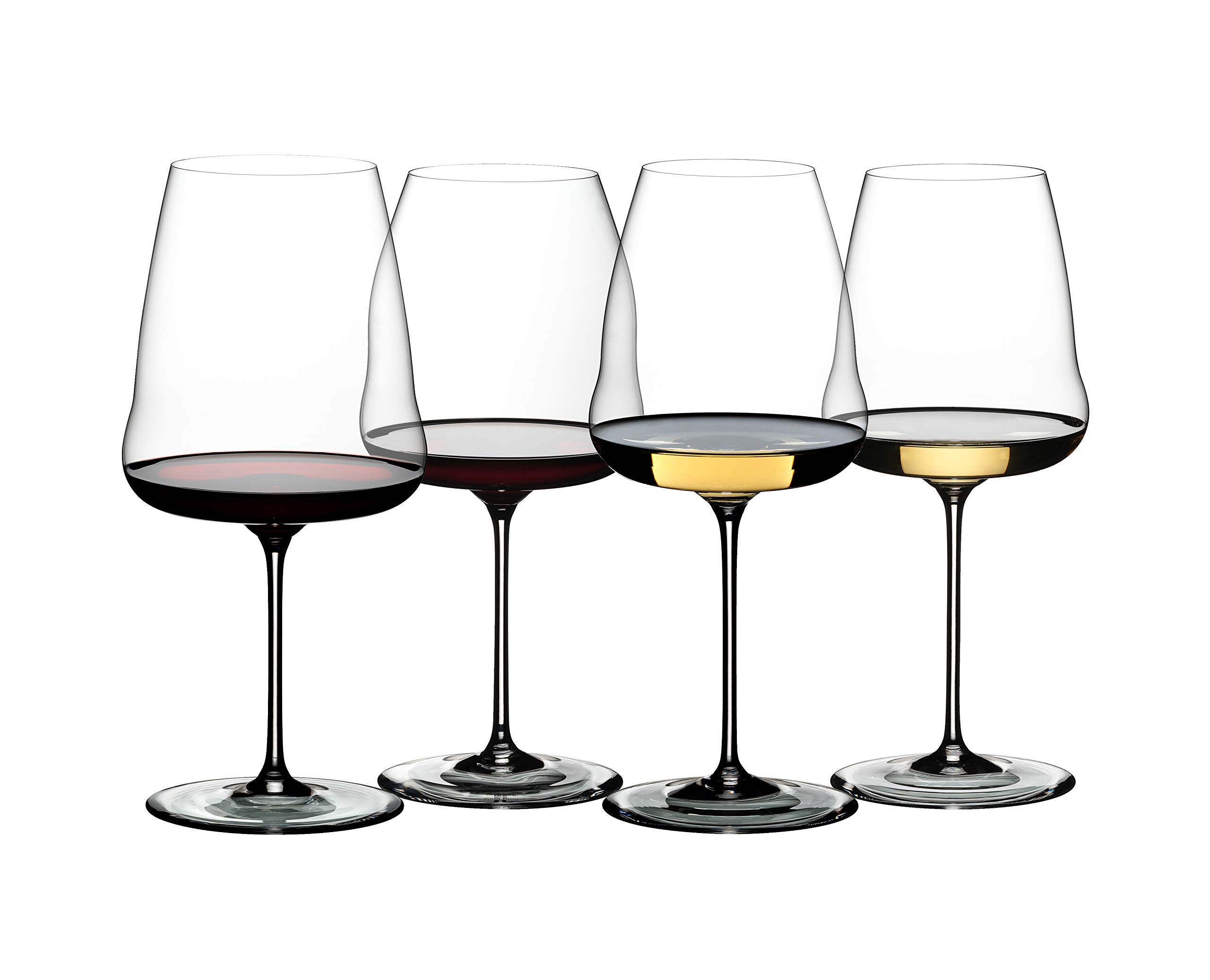
Wine glasses are not one-size-fits-all. The shape and size of the glass influence the way the wine interacts with air and your palate. Thats exactly why investing in proper wine glasses is more than just a matter of aesthetics.
The shape and design of wine glasses are crafted to enhance the sensory attributes and flavor of specific types of wines.
For those new to the world of wine glasses, red wine glasses typically have a larger bowl to enhance the wine’s flavor and allow it to breathe, while white wine glasses often have a narrower bowl to maintain the wine’s crispness and aroma.
When it comes to enhancing the experience of enjoying a fine bottle of wine, the choice of glassware is often underestimated.
However, the type of wine glass you use can significantly impact the wine’s aroma, taste, and overall enjoyment.
Understanding the influence of glassware
Wine enthusiasts are well aware that a wine’s flavor profile is intricately linked to its bouquet.
The shape and design of a wine glass play a pivotal role in capturing and concentrating the aromas, allowing them to reach your nose before you even take a sip.
Different types of wines possess distinct aromatic compounds, and using the appropriate glass enhances their perception.
The anatomy of a wine glass
To select the perfect wine glass, it’s crucial to understand its components:
- Bowl: The bowl’s size and shape influence how the wine’s aromas are concentrated. For red wines, a larger bowl with a wide opening is ideal, allowing the wine to aerate and develop. In contrast, white wines are best enjoyed from glasses with smaller bowls to preserve their delicate aromas.
- Rim: The rim’s thickness affects where the wine lands on your palate. A thin rim allows the wine to flow smoothly onto your tongue, enhancing the tasting experience.
- Stem: The stem serves both functional and aesthetic purposes. It allows you to hold the glass without warming the wine with your hand and prevents fingerprints on the bowl, maintaining the visual appeal.
- Foot/Base: The foot or base keeps the glass stable on a surface and adds to the overall balance of the glass.
Matching glasses to wine types
- Red wine glasses: For bold red wines like Cabernet Sauvignon or Syrah, opt for glasses with large bowls and tall stems. This design enhances aeration, bringing out complex aromas and flavors.
- White wine glasses: White wines, such as Chardonnay or Sauvignon Blanc, are better served in glasses with smaller bowls. The narrow shape helps retain the delicate aromas and maintain a cooler temperature.
- Sparkling wine glasses: Flutes are the go-to choice for sparkling wines like Champagne or Prosecco. Their elongated shape preserves the bubbles and directs the aroma towards your nose.
- Dessert wine glasses: These glasses are smaller in size, allowing you to savor the concentrated flavors of sweet dessert wines.
Choosing the right wine glass is not just a matter of aesthetics; it’s a key factor in unlocking the full potential of a fine wine.
As you continue your journey through the world of wine, remember that the glass you choose is a silent partner in the symphony of flavors and aromas that dance within the bottle.
We recommend beginning with these four types of wine glasses and then progressing to more sophisticated, designer, and high-end ones.
Corkscrew
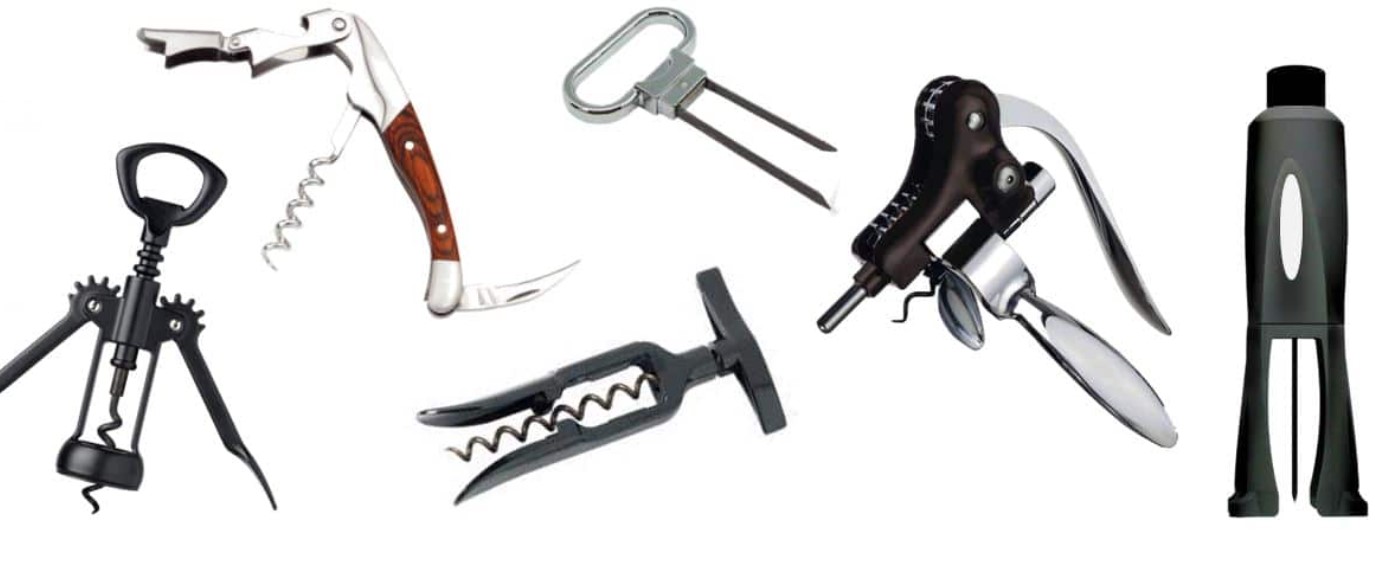
Uncorking a bottle of your favorite wine can be an elegant and satisfying ritual, often marking the beginning of a delightful culinary experience.
However, the choice of corkscrew can significantly impact this process, turning it into either a seamless act or a frustrating struggle.
With a plethora of corkscrew options available, it’s essential to understand the types, features, and factors that make up the ideal corkscrew for your needs.
Let’s delve into the world of corkscrews, helping you make an informed decision ensuring your favorite vintage’s seamless extraction.
Types of corkscrews
- Waiter’s corkscrew (Sommelier or Wine key): This classic corkscrew is a favorite among professionals and enthusiasts alike. Its compact size and three-in-one design, comprising a worm, a lever, and a foil cutter, make it versatile and practical. The worm, a spiral metal piece, bores into the cork, while the lever provides the necessary leverage to extract the cork effortlessly.
- Winged corkscrew: This corkscrew is recognizable by its two wing-like handles. As the worm goes into the cork, the wings rise, and pushing them down extracts the cork. While they are relatively easy to use, they might require a bit more physical effort than other designs.
- Lever or Rabbit corkscrew: Recognizable by its vertical design and two levers, the lever corkscrew uses a gripping mechanism to secure the bottle while a lever pulls the cork out. It’s efficient and reduces physical effort, making it an excellent choice for those who may struggle with traditional corkscrews.
- Ah-So or Vacu Vin corkscrew: Also known as a two-prong or butler’s friend corkscrew, the Ah-So is uniquely designed to remove aged or fragile corks without piercing them. It involves sliding the two prongs between the cork and the bottle’s neck, then gently rocking and twisting the cork out.
- Electric corkscrew: Ideal for those who prefer a touch of modern convenience, an electric corkscrew operates with a push of a button. It typically features a built-in foil cutter and offers an effortless uncorking experience, especially useful for people with limited hand strength.
Factors to consider when choosing a corkscrew
- Ease of use: Consider your comfort level with different corkscrew designs. If you’re new to wine, a waiter’s corkscrew might be a great starting point due to its user-friendly design.
- Type of wine: The type of wine you frequently enjoy might influence your corkscrew choice. Delicate older wines may benefit from the Ah-So or Vacu Vin, while lever corkscrews work well for everyday bottles.
- Portability: If you often enjoy wine on the go, a compact and lightweight corkscrew like the waiter’s corkscrew is a practical option.
- Build quality: Investing in a well-constructed corkscrew ensures longevity and smooth performance. Stainless steel and high-quality plastic are common materials for corkscrew construction.
- Price range: Corkscrews come in a wide range of prices, from budget-friendly options to high-end luxury models. Consider your budget and balance it with the features you desire.
- Additional features: Some corkscrews come with extra features such as foil cutters, bottle openers, or even wine pourers. Evaluate if these extras align with your needs.
Choosing the right corkscrew is a small decision with a significant impact on your wine experience.
Whether you’re a wine enthusiast looking to enhance your uncorking skills or a novice wine lover taking your first steps, understanding the different types of corkscrews and the factors that influence your choice can turn the once mundane task of uncorking into an artful ritual.
By assessing your preferences, needs, and the types of wine you enjoy, you can select a corkscrew that complements your lifestyle.
With options ranging from classic waiter’s corkscrews to innovative electric models, there’s a perfect wine opener out there waiting to elevate your wine enjoyment to new heights.
Wine decanter
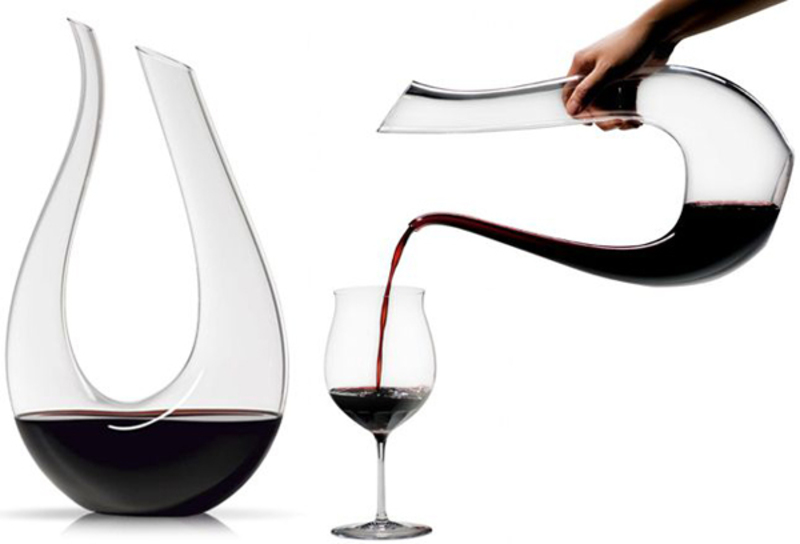
In the world of wine enthusiasts, the ritual of decanting is as revered as the bouquet of a well-aged Pinot Noir or Cabernet Sauvignon.
The process of decanting wine involves carefully transferring it from its bottle into a decanter, allowing it to breathe and enhance its flavors and aromas.
Unlocking the full potential of a bottle of wine often requires aeration, and decanter provides slower and more controlled aeration, particularly for older wines with sediment.
Understanding the essence of decanting
Wine decanting is more than just a fancy display – it serves a practical purpose. When a bottle of wine has been aging for a considerable time (especially older, vintage wines), sediment can accumulate, affecting the clarity and taste of the liquid.
The sediment is left behind in the bottle by gently pouring the wine into a decanter, resulting in a smoother and more pleasurable drinking experience.
Additionally, decanting exposes the wine to oxygen, a process that can help the flavors and aromas evolve and intensify. This is particularly beneficial for more tannic wines, allowing them to soften and become more approachable.
Types of decanters
- Classic glass decanters: These are the quintessential decanters that most people envision – elegant, curved vessels designed to hold an entire bottle of wine. They come in various shapes and sizes, each designed to enhance different types of wines.
- Aerating decanters: These decanters feature a wide base and a funnel-like neck that promotes vigorous aeration as wine is poured into them. They are ideal for bold red wines that require aeration to open up their complex flavors.
- Dual-chamber decanters: These innovative decanters have two compartments, allowing for aeration and separation from sediment simultaneously. They are excellent for older wines that require careful handling to avoid disturbing sediment.
- Artistic decanters: For those who appreciate both form and function, artistic decanters are a fusion of aesthetics and utility. They often come in unconventional shapes and designs that double as conversation pieces.
Choosing the perfect decanter
When selecting a decanter, consider these factors to ensure you find the ideal match for your wines:
- Size and shape: Different wines benefit from varying levels of aeration. Red wines, especially those high in tannins, require more exposure to oxygen. Thus, opt for a decanter with a larger surface area for these wines. White wines and older reds can benefit from a smaller decanter.
- Material: Most decanters are made from glass, crystal, or lead-free crystal. Glass is durable and dishwasher-safe, while crystal decanters are prized for their exceptional clarity and brilliance.
- Ease of cleaning: Intricately designed decanters might be visually appealing, but they can be challenging to clean. Consider how easy a decanter is to clean before making your decision.
- Price range: Decanters come in a wide range of prices. While there are exquisite, high-end options, there are also affordable yet functional choices available.
The art of wine decanting
Now that you have your chosen decanter, it’s time to master the art of wine decanting:
- Preparation: Place the bottle upright for a few hours before decanting to allow sediment to settle. Gently uncork the bottle without agitating it.
- Pouring: Hold the decanter at a slight angle and pour the wine slowly down the side of the vessel. This minimizes splashing and aeration during the initial pour.
- Observation: As the wine is poured, observe the liquid’s clarity and color. You can also notice the initial aromas escaping.
- Aeration: For young wines, aeration is key. Pour the wine with a bit more vigor to maximize exposure to oxygen. For older wines, a gentler pour is advised.
- Serving: After decanting, you can let the wine rest for a brief period before serving. Remember that wines can continue to evolve in the decanter, so tasting periodically can provide insights into its development.
Wine decanting is a practice that bridges the gap between science and art, enhancing the drinking experience and allowing the wine to express its full potential.
By understanding the various types of decanters and their functions, along with the nuances of the decanting process, you can transform an ordinary bottle of wine into an extraordinary sensory journey.
So, whether you’re preparing for a special occasion or simply indulging in the love of wine, the choice of decanter and the finesse of decanting will undoubtedly elevate your appreciation of this timeless beverage.
Wine aerator
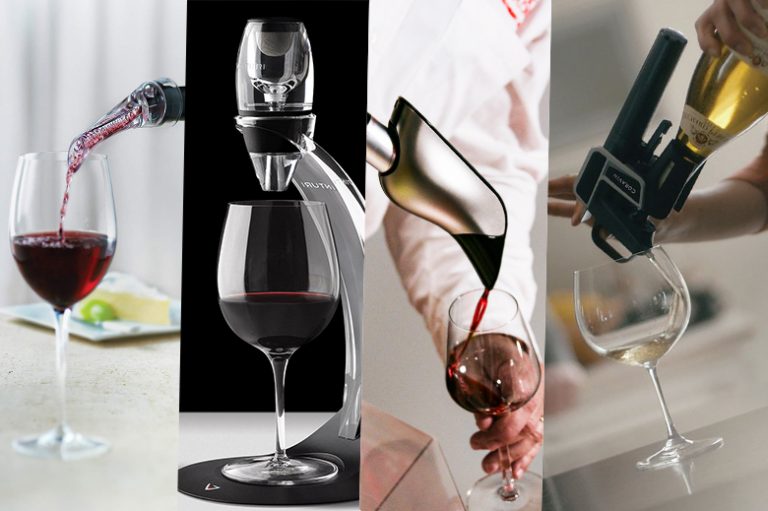
If decanting isn’t an option, a wine aerator is your go-to tool. It infuses the wine with air as you pour, intensifying the aromas and flavors immediately.
The science behind wine aeration
Wine aeration is the process of exposing wine to oxygen, which allows the wine to ‘breathe’ and develop its flavors and aromas.
As wine ages in the bottle, it undergoes a complex series of chemical reactions. Aeration accelerates these reactions, leading to the softening of tannins and the release of aromatic compounds, ultimately resulting in a smoother, more expressive wine.
Types of wine aerators
Wine aerators come in various shapes and sizes, each designed to achieve a specific level of aeration. Let’s explore the three main types of wine aerators:
- Pour-through aerators: These simple yet effective aerators attach to the neck of the wine bottle and utilize the force of gravity to infuse the wine with air as it pours into the glass. The Venturi effect, a phenomenon in fluid dynamics, creates a pressure difference that draws air into the wine, enhancing its flavors and aromas.
- Decanter-style aerators: Decanter-style aerators are standalone devices that resemble elegant wine decanters. They work by allowing the wine to cascade down the sides of the aerator, creating a broad surface area for oxygen exposure. Some models incorporate innovative designs that mimic the sound of the wine being poured into a traditional decanter, adding an element of theater to the wine-serving ritual.
- In-bottle aerators: These aerators are inserted directly into the wine bottle, exposing the wine to air as it is poured into the glass. They are particularly useful for situations where decanters might not be available, such as at restaurants or picnics.
- Electric wine aerators: In the age of technology, electric wine aerators have emerged to expedite the aeration process. They achieve aeration through an accelerated, controlled process.
Factors to consider when choosing a wine aerator
Selecting the perfect wine aerator can be a daunting task, but considering a few key factors will ensure you make an informed decision:
- Type of wine: Different wines benefit from varying degrees of aeration. Lighter wines, such as white wines and young reds, may require gentler aeration to avoid overwhelming their delicate flavors. Heavier red wines, on the other hand, can withstand more robust aeration.
- Ease of use: Opt for an aerator that is simple to assemble, use, and clean. Some models come with additional features, such as built-in filters to catch sediment, making the process even more convenient.
- Size and portability: Consider where you plan to use the aerator. If you’re a frequent traveler or enjoy outdoor gatherings, a compact and portable aerator might be the ideal choice.
- Budget: Wine aerators come in a wide price range, from budget-friendly options to high-end models with advanced features. Determine your budget and choose an aerator that offers the best value for your investment.
Wine preserver
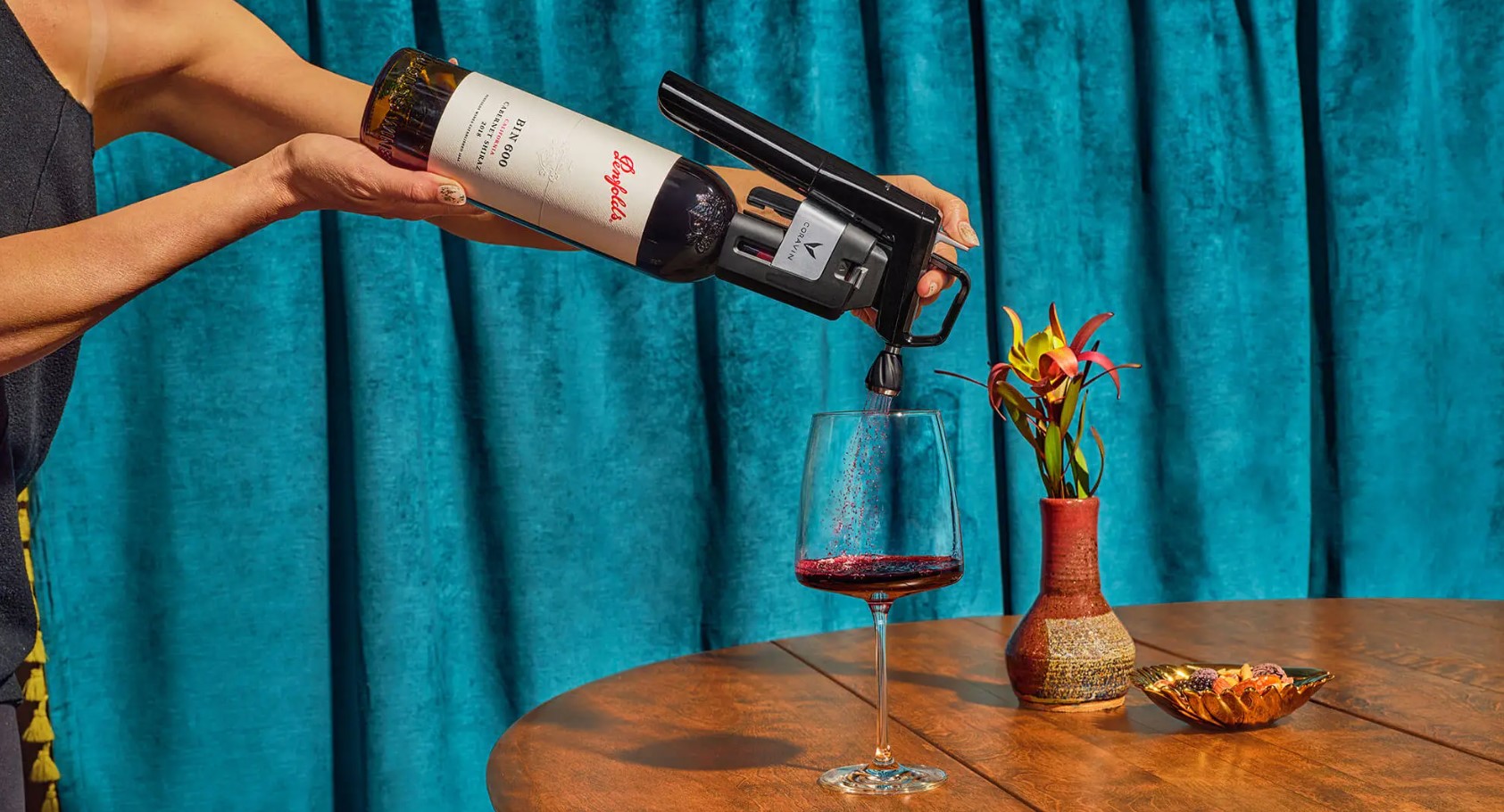
Not finishing a bottle of wine in one sitting? A wine preserver allows you to seal the bottle, preventing oxidation and preserving the wine’s freshness for days to come.
Whether you’re a dedicated collector, an occasional indulger, or someone who wants to savor an opened bottle over time, the art of preserving wine is crucial to ensure that every drop maintains its original splendor.
The science behind wine preservation
Before we delve into the methods and tools, it’s important to understand the science behind wine preservation.
Wine’s complexity is a result of the intricate balance between compounds like tannins, acids, and sugars.
When exposed to air, wine undergoes oxidation, leading to a gradual loss of its original characteristics. This is where wine preservation comes into play – to delay this oxidation process and extend the lifespan of your cherished bottles.
Types of wine preservers
- Vacuum wine pumps and sealers: Vacuum pumps and sealers work by removing air from the bottle and creating a vacuum, thus reducing the wine’s exposure to oxygen. These devices often come with specialized stoppers that allow you to create an airtight seal. Vacuum wine sealers are an affordable and easy-to-use option for casual wine enthusiasts.
- Inert gas systems: Using inert gases like argon or nitrogen, these systems create a protective barrier between the wine and the air. Since these gases are heavier than air, they settle over the wine’s surface, preventing oxygen from coming into contact with it. Inert gas systems are favored for their effectiveness in preserving both still and sparkling wines.
- Coravin wine preservation system: The Coravin system has gained immense popularity among serious wine collectors. It allows you to pour wine without removing the cork, using a thin needle to access the wine while replacing it with inert gas. This method is particularly useful for high-end wines that are meant to age gracefully over an extended period.
- Wine dispensing and wine preservation systems: These systems are ideal for those who want to enjoy wine by the glass without opening the entire bottle. They use mechanisms that minimize the wine’s exposure to air as it’s dispensed, ensuring that the remaining wine in the bottle remains fresh for a longer period.
Choosing the best wine preserver
Selecting the right wine preserver depends on your preferences, budget, and the type of wines you frequently enjoy. Here are some factors to consider:
- Wine type: Different preservation methods suit different types of wines. For example, inert gas systems are excellent for preserving vintage wines, while vacuum sealers are more versatile and can be used for both reds and whites.
- Frequency of use: If you frequently enjoy a glass of wine, a vacuum sealer might be a more practical option. For occasional indulgence, an inert gas system or a Coravin might be a better investment.
- Budget: Wine preservation tools come at various price points. While vacuum sealers are generally more affordable, Coravin systems tend to be on the higher end. Consider your budget and how much you’re willing to invest in preserving your wine collection.
- Longevity: If you’re looking to age wines for years, the Coravin system is a compelling choice. Its ability to access the wine without removing the cork ensures that the aging process remains undisturbed.
Preserving wine is an art that requires a delicate balance between science and passion. With a variety of wine preservation tools available, enthusiasts have the opportunity to savor their favorite bottles over time without sacrificing quality.
Whether you’re a casual wine lover or a devoted collector, the key is to choose a preservation method that aligns with your preferences and intentions for your wines.
By doing so, you can ensure that every sip you take is a journey through time, encapsulating the very essence of the grape and the land from which it came.
Beyond the basics: Exploring unique wine accessories
When it comes to enhancing the wine-drinking experience, there’s a world beyond just the wine itself.
Exploring unique wine accessories can add an extra layer of sophistication and enjoyment to your wine journey.
These accessories are designed to improve wine presentation, preservation, and overall enjoyment. Here are some intriguing accessories that go beyond the basics:
Wine thermometer
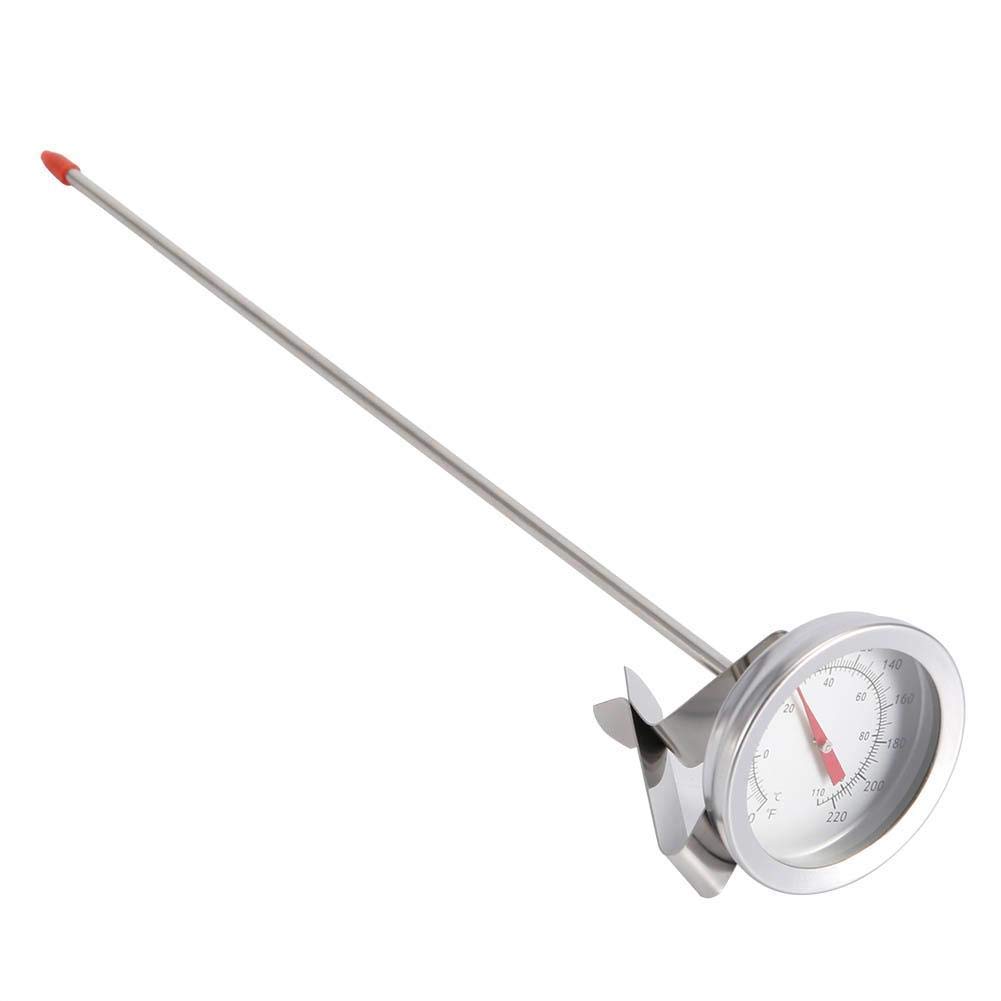
The world of wine is a realm of intricate flavors, textures, and aromas. Serving wine at the right temperature is crucial to appreciate its nuances fully. A temperature difference of a few degrees can elevate or diminish the experience of sipping a carefully selected bottle.
A wine thermometer ensures your bottle is served at the optimal temperature, enhancing the taste experience.
What is a wine thermometer
A wine thermometer is a specialized tool designed to measure the temperature of wine accurately. Temperature plays a pivotal role in the perception of flavors and aromas, making the thermometer an essential companion for every wine enthusiast, from casual tasters to seasoned sommeliers.
Whether it’s red, white, or sparkling, the temperature at which wine is served can significantly influence its taste profile.
Types of wine thermometers
- Digital Thermometers: These thermometers use advanced technology to provide quick and accurate temperature readings. They often come with LCD screens, allowing you to instantly see the temperature without any guesswork.
- Analog Dial Thermometers: Classic and reliable, analog dial thermometers feature a needle that points to the wine’s temperature on a circular scale. They are user-friendly and require no batteries.
- Infrared Thermometers: These non-contact thermometers measure the temperature of the wine’s surface, making them suitable for checking the temperature of wine bottles without uncorking them.
- Smartphone-Connected Thermometers: Leveraging the power of technology, these thermometers can be connected to your smartphone via Bluetooth. They provide real-time temperature updates and often come with pre-set temperature ranges for different wine types.
Choosing the best wine thermometer
Selecting the right wine thermometer can significantly enhance your wine-drinking experience. Here are some key factors to consider:
- Accuracy: Accurate temperature readings are paramount. Look for thermometers with precision sensors that provide reliable measurements.
- Temperature range: Different types of wine are best enjoyed at specific temperatures. Opt for a thermometer that covers the temperature range relevant to your preferred wine types.
- Ease of use: Consider the thermometer’s user-friendliness. Digital and smartphone-connected thermometers tend to be more intuitive, while analog thermometers may require a bit of familiarity.
- Build quality: Invest in a thermometer made from durable materials that can withstand the demands of wine service.
- Additional features: Some thermometers come with built-in wine guides, serving recommendations, and alarms to alert you when the wine reaches the desired temperature.
A meticulously crafted wine can reach its full potential only when served at the right temperature. The wine thermometer is your key to unlocking this potential, ensuring that each sip is a journey through layers of flavor and aroma.
As you embark on your quest for the perfect wine thermometer, consider the types available, the features that align with your preferences, and the accuracy that guarantees an exceptional tasting experience.
With the right thermometer in hand, you become the maestro orchestrating the symphony of your wine’s sensory delight.
Wine bags
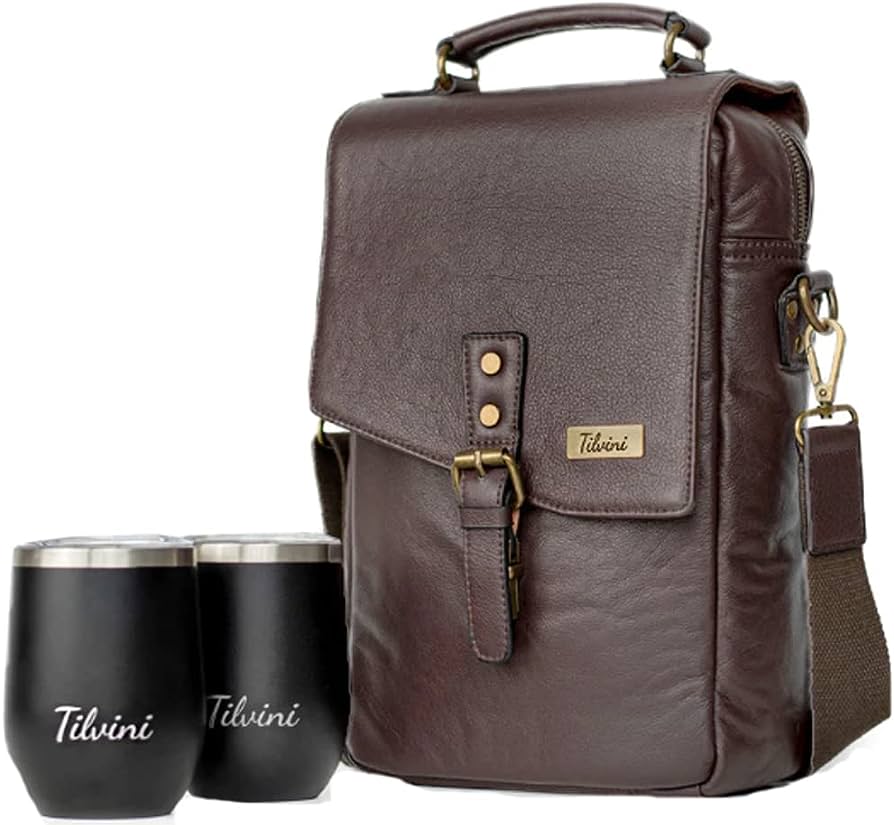
Wine has always been more than just a beverage; it’s an experience, a symbol of celebration, refinement, and culture.
As any wine enthusiast knows, the journey from vineyard to glass is one that requires careful consideration, and that includes how you transport and store your beloved bottles. This is where wine bags come into play – an essential accessory that combines functionality with style.
What are wine bags?
Wine bags are specialized carriers designed to safely transport and protect wine bottles. They provide a convenient and stylish solution for wine lovers on the go, whether you’re heading to a picnic, a dinner party, or a weekend getaway.
Wine bags are crafted to prevent bottles from clinking together, safeguard against temperature changes, and shield the bottles from potential damage during travel.
Types of wine bags
- Single bottle wine bags: These compact bags are ideal for carrying a single bottle of wine. They often feature padded interiors or dividers to keep the bottle secure and prevent breakage. Single bottle wine bags come in various materials, including leather, canvas, and neoprene.
- Multiple bottle wine totes: For those occasions when one bottle simply won’t suffice, multiple bottle wine totes are the perfect solution. These bags are designed to carry two to six bottles, making them excellent for larger gatherings or as gifts.
- Insulated wine bags: If you’re planning on transporting chilled white or sparkling wines, insulated wine bags are a must. These bags come equipped with thermal insulation to maintain the desired temperature of your wines, ensuring they’re ready to be enjoyed upon arrival.
- Backpack wine bags: For the adventurous wine lover, backpack wine bags offer a hands-free option for carrying your bottles. These bags often come with compartments for wine glasses, corkscrews, and other accessories, making them a practical choice for outdoor activities.
- Wheeled wine bags: For the ultimate in convenience, wheeled wine bags combine the functionality of a travel suitcase with the protection required for your wine bottles. These bags are equipped with sturdy wheels and handles, making it easy to transport multiple bottles without the risk of strain or breakage.
How to choose the best wine bag
Choosing the right wine bag involves considering several key factors:
- Material: Wine bags are available in a variety of materials, including leather, canvas, neoprene, and even eco-friendly options. Consider the durability, style, and personal preference when selecting the material.
- Size: Determine the number of bottles you’re likely to carry most frequently. Opt for a single bottle bag if you’re typically transporting just one bottle, or go for a larger tote if you often attend gatherings or events.
- Insulation: If you frequently transport wines that require specific temperature conditions, choose an insulated bag to ensure your wines stay at the optimal temperature.
- Design and Style: Wine bags come in an array of designs, from classic to contemporary. Consider your personal style and the occasions you’ll be using the bag for when making your choice.
- Additional Features: Some wine bags offer extra pockets for accessories like corkscrews, wine glasses, and napkins. These features can enhance the overall convenience of the bag.
As a wine enthusiast, taking care of your bottles from the vineyard to the glass is a crucial part of preserving the quality and taste.
Wine bags offer a blend of practicality and style that ensures your precious bottles are transported safely and elegantly.
So, the next time you’re planning an outing or gifting a bottle, consider the perfect wine bag to accompany your journey.
Champagne stopper
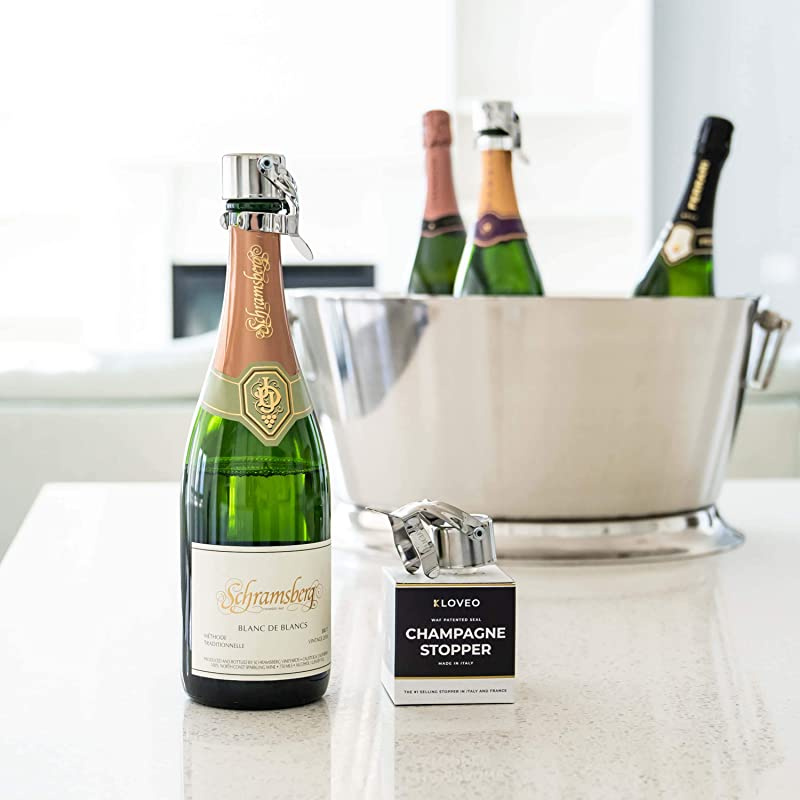
When it comes to celebrating special occasions or indulging in moments of luxury, few beverages hold the same level of allure as champagne.
The elegant effervescence, the delightful pop of the cork, and the joyous clinking of glasses – all these elements contribute to the mystique of champagne.
But what happens when the festivities wind down and there’s still some bubbly left in the bottle? Enter the unsung hero of the champagne world: the champagne stopper.
A champagne stopper ensures that the bubbles stay intact even after the bottle has been opened, allowing you to enjoy the fizziness over multiple occasions.
The role of a champagne stopper: Beyond keeping bubbles intact
A champagne stopper, also known as a sparkling wine stopper or a champagne sealer, is a small but significant accessory designed to preserve the freshness, carbonation, and flavors of an opened bottle of champagne.
It’s a common misconception that a spoon or a fork wedged into the bottle neck will do the trick; however, these makeshift methods fall short in maintaining the original quality of the beverage.
A quality champagne stopper ensures that the champagne remains fizzy, aromatic, and ready to be enjoyed down to the last drop.
How to choose the best champagne stopper
Selecting the ideal champagne stopper might seem like a simple task, but various factors play a role in ensuring you get the most out of your bubbly experience:
- Materials matter: Champagne stoppers can be crafted from various materials, including stainless steel, silicone, and plastic. Stainless steel stoppers offer durability and an airtight seal, while silicone stoppers are known for their flexibility and ability to fit different bottle sizes.
- Sealing mechanism: Look for stoppers that feature a secure and reliable sealing mechanism. Some stoppers employ a clamp-like design that ensures an airtight seal, while others use a locking system to keep the pressure intact.
- Design and aesthetics: Champagne stoppers come in an array of designs, from sleek and modern to ornate and decorative. Choose a stopper that aligns with your personal style while providing practical functionality.
- Ease of use: The best champagne stoppers are user-friendly and can be easily attached and removed without hassle. A simple one-handed operation can be a game-changer when you’re eager to reseal a bottle swiftly.
Exploring the types of champagne stoppers
- Cork stoppers: These are traditional stoppers made from cork material and often used by winemakers during the production process. They can be reused to an extent but might not provide the same level of airtight sealing as modern alternatives.
- Pressure-activated stoppers: Utilizing a clamp-like mechanism, these stoppers lock onto the bottle neck with a satisfying click. They are renowned for their ability to preserve the carbonation and flavors effectively.
- Screw cap stoppers: Inspired by the design of wine bottle caps, these stoppers have a threaded mechanism that provides a secure seal. They are easy to use and reseal, making them a popular choice.
- Vacuum stoppers: Employing a manual or automatic pump, these stoppers remove excess air from the bottle, helping to extend the lifespan of the champagne. However, they can be slightly bulkier than other options.
- Decorative stoppers: Crafted for both functionality and aesthetics, these stoppers often feature intricate designs, making them ideal for special occasions or as gifts.
In the world of champagne, the party doesn’t have to end when the initial pop is over.
With the right champagne stopper, you can extend the life of your beloved bubbly, ensuring that every glass retains its signature effervescence and taste.
Wine pourer
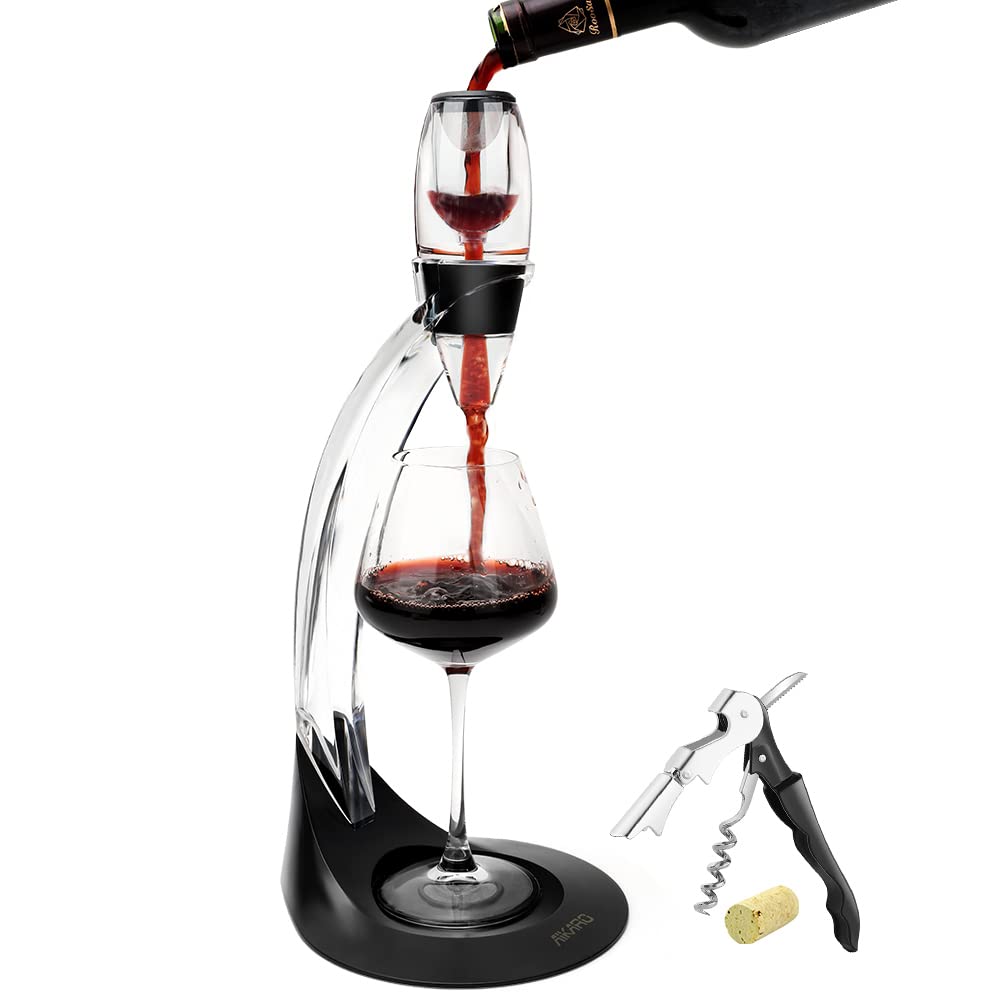
The wine pourer is a tool that not only enhances the visual appeal of your wine presentation but also influences its taste.
Understanding the wine pourer
A wine pourer, also known as a wine aerator or a wine spout, is a device designed to enhance the wine-pouring experience.
It serves multiple purposes, ranging from improving the wine’s flavor and aroma to preventing drips and spills that can mar your tabletop or stain your linens.
A good pourer can effectively aerate the wine as it is poured, allowing it to mix with oxygen and develop its full bouquet.
Types of wine pourers
- Aerator pourers: These pourers feature aeration chambers or channels that introduce air into the wine stream, facilitating the oxidation process. Aeration opens up the wine, softening its tannins and releasing its complex aromas, ultimately resulting in a smoother, more flavorful taste.
- Drip-free pourers: As the name suggests, these pourers are designed to minimize drips and spills while pouring. They often have rubber or silicone seals that create a tight fit with the bottle, ensuring a clean and elegant pour.
- Long-neck pourers: These pourers are characterized by their elongated necks, which allow for a controlled and precise pour. They are particularly useful for serving older wines that require gentle handling to avoid disturbing sediment.
- Decanter-style pourers: Resembling miniature decanters, these pourers often come with a wider base and aeration features. They provide a more extensive surface area for the wine to interact with air, thus accelerating the aeration process.
Choosing the best wine pourer
Selecting the right wine pourer can greatly enhance your wine-drinking experience. Here are some key factors to consider:
- Material: Wine pourers can be made from various materials such as stainless steel, acrylic, and glass. Stainless steel is durable and often used in higher-end models, while acrylic and glass pourers can offer aesthetic appeal.
- Aeration Performance: If you’re looking for enhanced aeration, opt for pourers with intricate aeration channels or chambers that allow for maximum oxygen exposure.
- Drip Prevention: If spillage is a concern, focus on pourers with effective drip-free features, such as rubber or silicone seals.
- Design: Wine pourers come in a range of designs, from minimalist to ornate. Choose a design that aligns with your personal style and complements your wine-serving rituals.
In the world of wine, every detail matters, and the wine pourer is no exception.
From transforming the wine’s flavors and aromas to elevating the presentation, the right pourer can make a significant impact on your overall wine experience.
As you embark on your journey to find the perfect wine pourer, consider the type that suits your preferences and needs, ensuring that each pour becomes a refined ritual.
So, the next time you uncork a bottle, take a moment to appreciate the artistry of the pourer and the nuanced enhancement it brings to your glass of wine.
Wine racks

Wine accessories also include creative ways to display and store your wine bottles. Wine racks, holders, and artistic displays can turn your wine collection into a functional and visually appealing focal point in your living space.
In the world of oenophiles and casual wine enthusiasts alike, proper storage of wine is an essential consideration. The journey from vine to bottle is a meticulous process, and preserving the flavor and quality of wine requires meticulous care even after it’s bottled.
This is where wine racks come into play. A wine rack isn’t just a storage solution; it’s a piece of functional art that ensures your favorite vintages age gracefully.
Understanding wine racks
A wine rack is a specialized furniture piece designed to store wine bottles horizontally.
Unlike vertically storing bottles, which can lead to premature oxidation and degradation of flavors, horizontal storage keeps the cork moist and swelled, maintaining a tight seal and preventing air from entering the bottle. This position ensures that the wine ages properly and retains its full bouquet.
Types of wine racks
Wine racks come in various designs and materials, each offering a unique blend of functionality and aesthetics. Here are some popular types:
- Wooden wine racks: Traditional and elegant, wooden wine racks are favored for their timeless appeal. They range from small countertop models to elaborate floor-to-ceiling structures. The types of wood used, such as pine, oak, or mahogany, contribute to the overall style and durability of the rack.
- Metal (industrial) wine racks: These racks are modern and versatile, often made from materials like stainless steel or wrought iron. They can fit seamlessly into contemporary spaces and are available in various sizes, shapes, and configurations, including wall-mounted and modular options.
- Wall-mounted wine racks: Perfect for saving space, these racks can be installed on walls, utilizing vertical space efficiently. They can range from minimalist designs to elaborate artistic displays.
- Stackable wine racks: Ideal for expanding your storage as your collection grows, stackable racks allow you to build your wine storage system according to your needs.
- Wine cabinets and credenzas: For those seeking a more concealed storage solution, wine cabinets and credenzas combine functionality with elegance. These pieces often include storage for glassware and other wine-related accessories.
Choosing the right wine rack
Selecting the best wine rack for your collection involves a careful consideration of various factors:
- Available space: Measure the area where you plan to place the wine rack. This will help you determine the size and configuration that will fit comfortably.
- Bottle capacity: Assess the size of your collection and its potential growth. Choose a wine rack that can accommodate your existing bottles and provide room for expansion.
- Aesthetic appeal: Consider the overall style of your space. Whether you prefer a rustic wooden rack or a sleek metal design, your choice should complement the existing decor.
- Accessibility: Think about how easily you want to access your bottles. Wall-mounted racks may be visually appealing, but they might be less convenient to access than freestanding models.
- Climate control: If you live in an area with fluctuating temperatures and humidity levels, you might want to invest in a wine rack that offers additional climate control features to ensure your wines age optimally.
A wine rack isn’t merely a storage solution; it’s a statement piece that demonstrates your appreciation for the art of wine and its proper preservation.
By understanding the importance of horizontal storage and exploring the various types available, you can make an informed choice that caters to your collection’s needs and your aesthetic preferences.
Whether you’re a seasoned collector or just starting to build your wine selection, investing in the right wine rack can enhance your wine experience and ensure that each bottle is enjoyed at its best.
Wine coolers
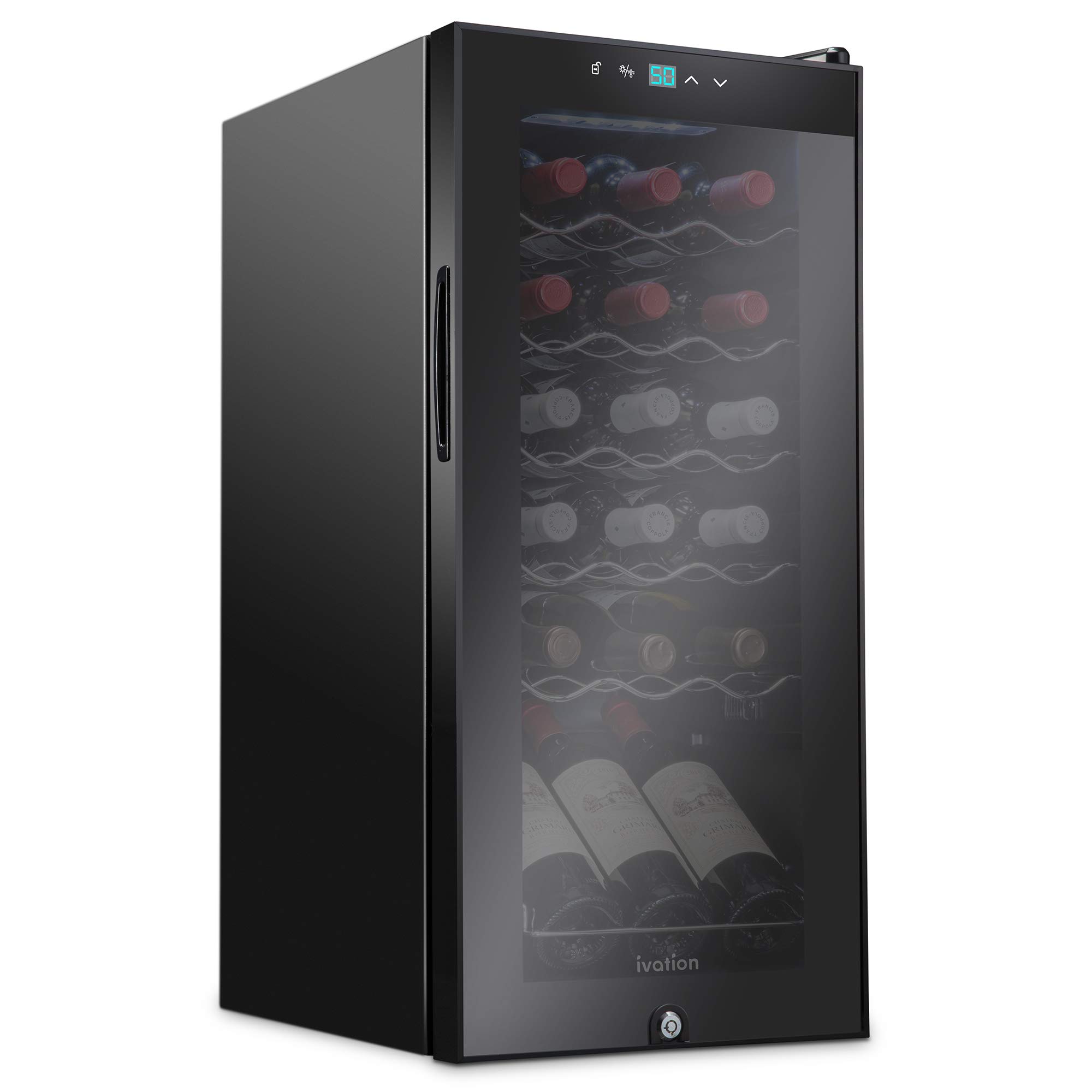
In the realm of wine enthusiasts and connoisseurs, maintaining the ideal temperature for storing and serving wine is paramount.
This is where a wine cooler steps in. A wine cooler is not just a luxury appliance; it’s a tool that preserves the intricate flavors and aromas of your favorite wines.
What is a wine cooler?
A wine cooler is a specialized appliance designed to store and chill wine at the optimal temperature.
Unlike a regular refrigerator, which operates at lower temperatures, wine coolers maintain the ideal range of around 45-65°F (7-18°C) for both red and white wines.
This controlled environment prevents premature aging, oxidation, and flavor degradation, ensuring your wines mature gracefully.
Types of wine coolers
- Single-Zone Wine Coolers: These coolers have a uniform temperature throughout the unit, making them suitable for those who predominantly store one type of wine, be it red or white.
- Dual-Zone Wine Coolers: These models offer separate temperature zones, enabling you to store different types of wines in one unit. Red and white wines have distinct temperature preferences, and dual-zone coolers provide the flexibility to cater to both.
- Built-In Wine Coolers: Designed to seamlessly integrate with your kitchen cabinets, these coolers offer a sleek appearance and are perfect for those with limited space.
- Freestanding Wine Coolers: These stand-alone units provide flexibility in placement and are often more spacious than built-in models, making them an excellent choice for larger collections.
- Countertop Wine Coolers: Ideal for wine lovers with small collections or limited space, countertop coolers are compact and convenient.
- Thermoelectric vs. Compressor Wine Coolers: Thermoelectric coolers use a solid-state cooling mechanism, making them quieter and more energy-efficient. Compressor coolers, on the other hand, offer faster cooling and are suitable for larger collections.
Choosing the best wine cooler
Selecting the perfect wine cooler involves a blend of practical considerations and personal preferences:
- Capacity: Evaluate the number of bottles you intend to store now and in the future. Wine coolers come in various sizes, accommodating anywhere from a dozen to over a hundred bottles.
- Temperature Zones: Consider whether you prefer to store both red and white wines or just one type. Dual-zone coolers are a fantastic option for the former, while single-zone coolers are more suitable if you primarily enjoy one type of wine.
- Noise Level: If noise is a concern, especially if you’re placing the cooler in a living area, opt for a thermoelectric cooler known for its quiet operation.
- Design and Aesthetics: Decide between a built-in or freestanding unit, depending on your space and style preferences. Some coolers come with stylish features like LED lighting to showcase your collection.
- Energy Efficiency: Look for coolers with an Energy Star rating, as these are designed to be energy-efficient, saving you money in the long run.
- Budget: Wine coolers come in a wide price range. While it’s tempting to splurge on a high-end model, prioritize features that align with your needs and budget.
Caring for your wine cooler
Once you’ve invested in the perfect wine cooler, proper maintenance is essential:
- Location: Place the cooler away from direct sunlight, heat sources, and vibrations, as these factors can compromise wine quality.
- Regular Cleaning: Keep the interior clean and free of dust to prevent unwanted odors from seeping into your wine.
- Monitor Humidity: Maintain a humidity level of around 70% to prevent corks from drying out and air from entering the bottles.
A wine cooler is not just a home appliance; it’s a sanctuary for your prized wine collection and one of the ultimate luxury wine gifts.
From single-zone to dual-zone options, from countertops to freestanding units, the variety of wine coolers available allows you to curate the perfect environment for your wines to mature.
By understanding the different types and features of wine coolers and considering factors like capacity, temperature zones, and aesthetics, you can confidently choose the best wine cooler to suit your needs and enhance your wine enjoyment.
Wine refrigerators
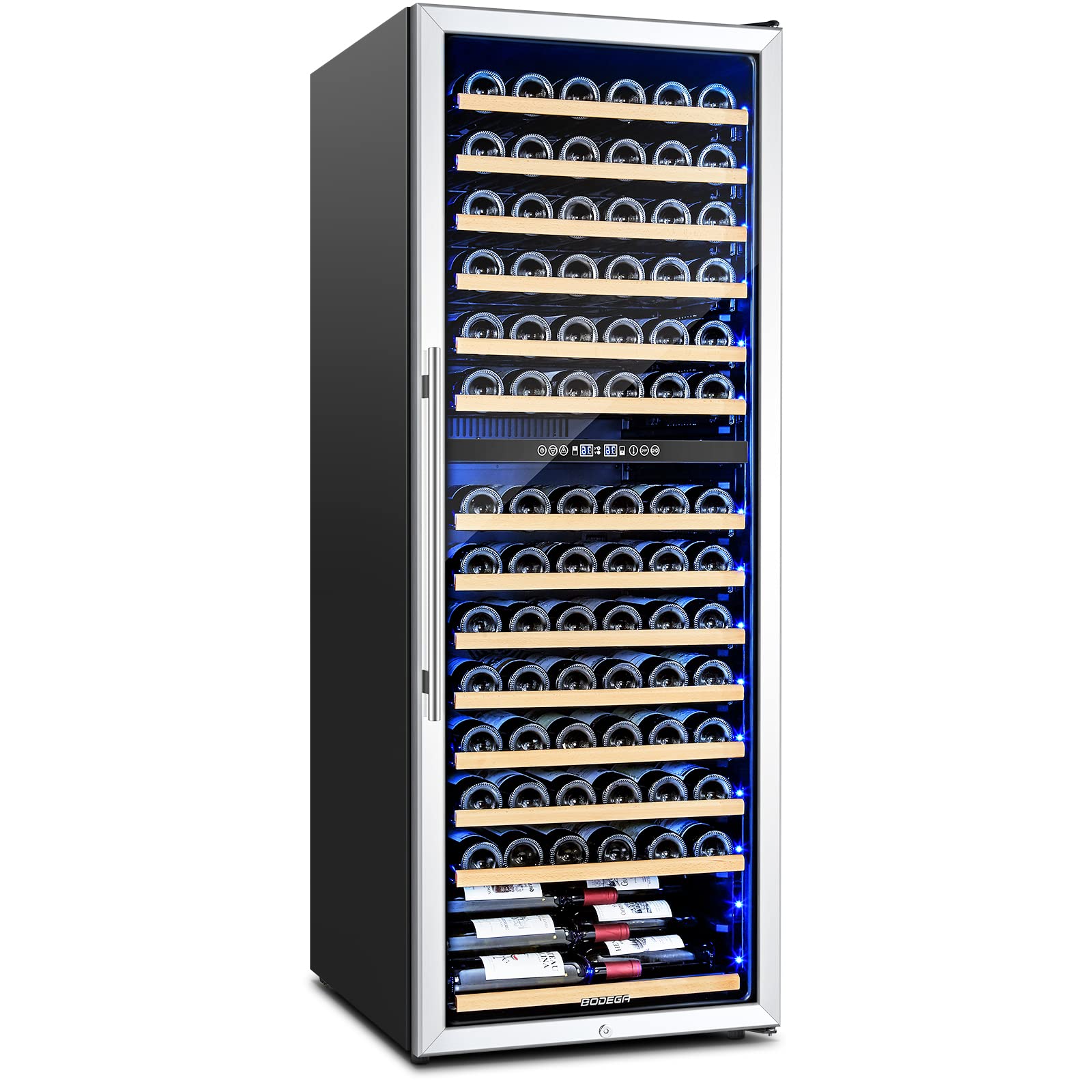
Wine has been a beloved companion to celebrations, dinners, and quiet evenings for centuries. To preserve and enhance the flavors of your cherished bottles, investing in a wine refrigerator is a must.
That’s why we have carefully chosen the best wine coolers and refrigerators to suit the taste, budget, and preference of every wine lover.
Understanding the wine refrigerator
A wine refrigerator is a specialized appliance designed to store and maintain wine at the optimal temperature and humidity levels.
Unlike regular refrigerators, wine refrigerators are crafted to provide a consistent environment that preserves the integrity and taste of your wines.
Wine enthusiasts recognize that improper storage can lead to flavor degradation, premature aging, and ultimately, disappointment.
The importance of proper wine storage
Wine is a delicate elixir that evolves over time. Fluctuations in temperature, exposure to light, and humidity variations can all contribute to unwanted chemical reactions that degrade the wine’s quality.
A wine refrigerator offers a controlled environment, ensuring your wines age gracefully and retain their desired characteristics.
Choosing the best wine refrigerator
When selecting a wine refrigerator, several factors come into play:
- Capacity and size: Determine how many bottles you plan to store and the available space in your home. Wine coolers come in various sizes, from compact countertop models to larger freestanding units.
- Single zone vs. dual zone: Single-zone wine coolers have a uniform temperature throughout, while dual-zone models offer separate temperature control for storing both red and white wines at their ideal serving temperatures.
- Temperature range: Different types of wine have specific temperature requirements. Red wines generally thrive at slightly warmer temperatures compared to whites. A quality wine refrigerator should offer a wide temperature range to accommodate various wines.
- Humidity control: Humidity levels play a crucial role in preventing corks from drying out and maintaining label integrity. Look for a wine cooler with humidity control features.
- Vibration and noise: Vibration can disturb sediments in wine, affecting its flavor. Opt for a model with minimal vibration and noise to ensure your wines rest undisturbed.
- UV protection: UV rays can prematurely age wine and alter its taste. Choose a wine refrigerator with UV-resistant glass or solid doors to shield your collection.
- Energy efficiency: An energy-efficient model will not only save on your electricity bill but also contribute to a more eco-friendly lifestyle.
Types of wine refrigerators
There are various types of wine refrigerators available to suit different preferences and space constraints:
- Freestanding wine refrigerators: These versatile models can be placed anywhere, offering flexibility in placement and often accommodating a larger bottle capacity.
- Built-in wine refrigerators: Ideal for those with limited space, these units are designed to seamlessly integrate into your kitchen cabinets, creating a sleek and polished look.
- Countertop wine coolers: Perfect for smaller collections or those living in apartments, these compact models fit conveniently on your kitchen counter.
- Under-counter wine refrigerators: Similar to built-in models, these units fit underneath your countertop, making efficient use of space and keeping your wine collection discreetly stored.
A wine refrigerator is more than just a storage solution; it’s a testament to your passion for wines.
By providing the optimal conditions for aging and preserving your bottles, it ensures that each sip is a delightful experience.
Remember to consider factors like size, temperature control, and humidity when choosing the perfect wine refrigerator for your needs. With the right appliance, you’ll embark on a journey of flavors and aromas that will be savored for years to come.
Navigating the world of wine accessories: A buyer’s guide
Before you embark on your journey to amass a collection of wine accessories, here are a few tips to guide your choices:
- Quality matters: Invest in longevity
While budget options may seem appealing, investing in high-quality accessories ensures they will stand the test of time and continue to enhance your wine experiences for years to come.
- Know your wine preferences
Different wine accessories are tailored to specific types of wine. Consider your preferences – are you a red wine aficionado, a white wine enthusiast, or do you have a penchant for champagne?
- Functionality and versatility
Some accessories, like wine glasses and decanters, are versatile and can accommodate various types of wine. Opt for accessories that offer functionality across your preferred wine choices.
Conclusion
Wine accessories are more than tools; they’re an extension of the wine experience itself.
From elegant wine openers and stylish cork holders to wine thermometers that ensure perfect serving temperatures, the world of wine accessories is vast and diverse.
It’s not just about owning the tools; it’s about understanding how each accessory enhances your connection with the wine.
Whether you’re hosting a wine tasting soirée or enjoying a quiet evening with a bottle of your favorite vintage, the right accessories elevate your experience from ordinary to extraordinary.
In conclusion, the wine accessories discussed in this article are not mere gadgets; they are enablers of a richer, more immersive wine journey.
Each accessory contributes to the holistic experience of wine appreciation, enhancing the sensory pleasures that this age-old beverage offers.
As you explore the world of wine, consider incorporating these essential tools into your collection and discover the remarkable difference they can make in every sip and moment of wine enjoyment.
Cheers to discovering the art of wine enjoyment, one accessory at a time.
Our Expertise
Valentina Silovic is a sommelier and content creator with over a decade of experience in the wine industry.
For this article, she collaborated with Dario Drmac, a wine entrepreneur renowned for his innovative digital approach, and Nenad Trifunovic, an esteemed moderator, wine workshop educator, and dedicated advocate for wine-drinking culture.
Their combined experience and insights contribute significantly to the depth and authority of the content presented.
Want to meet the team, seek recommendations, and discover in-depth insights into our product testing and reviews? Click here now!

















